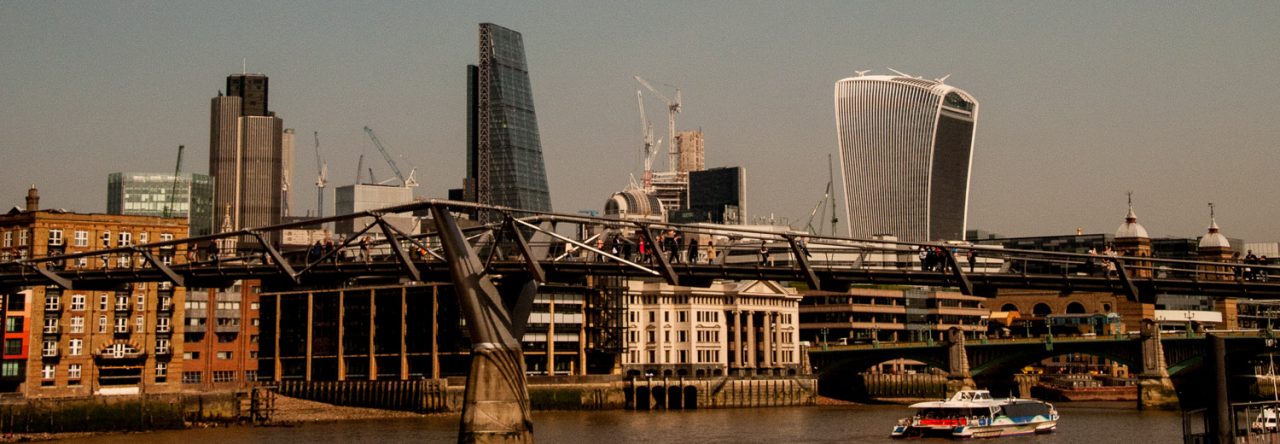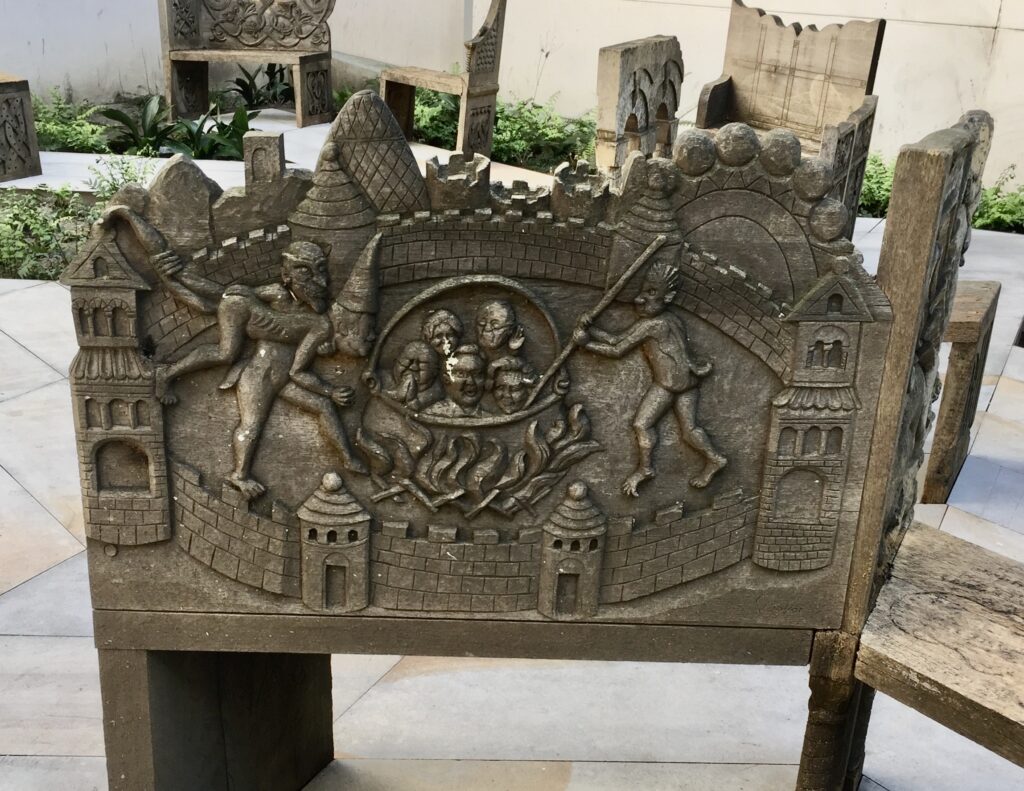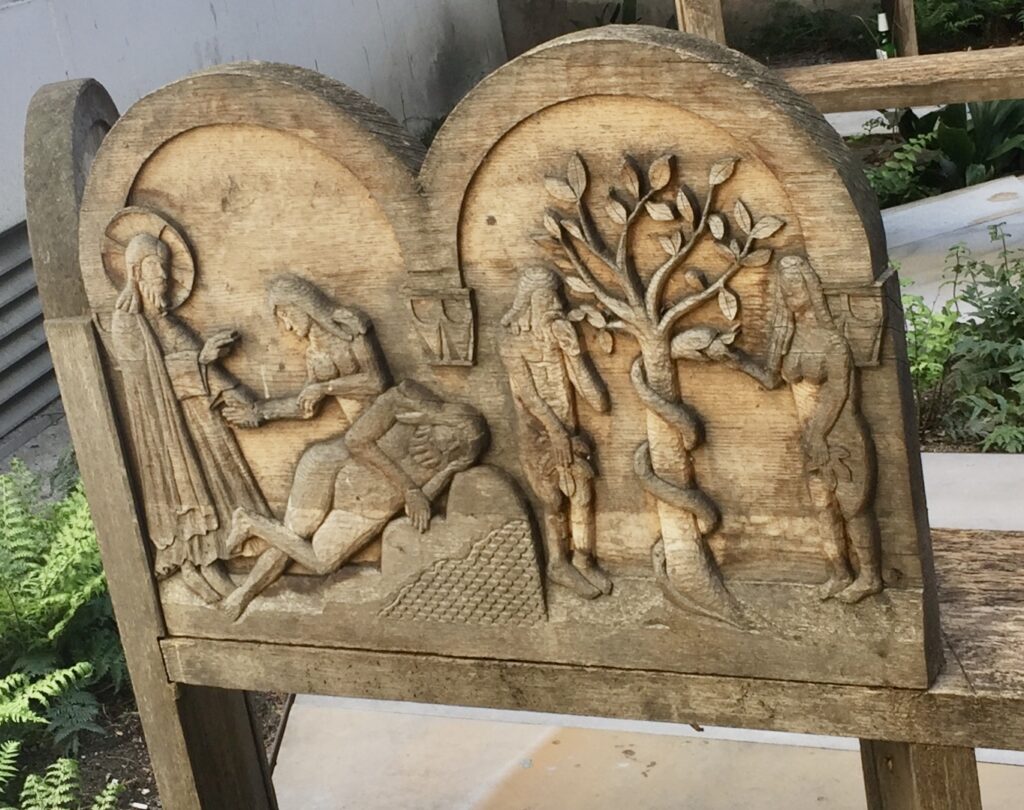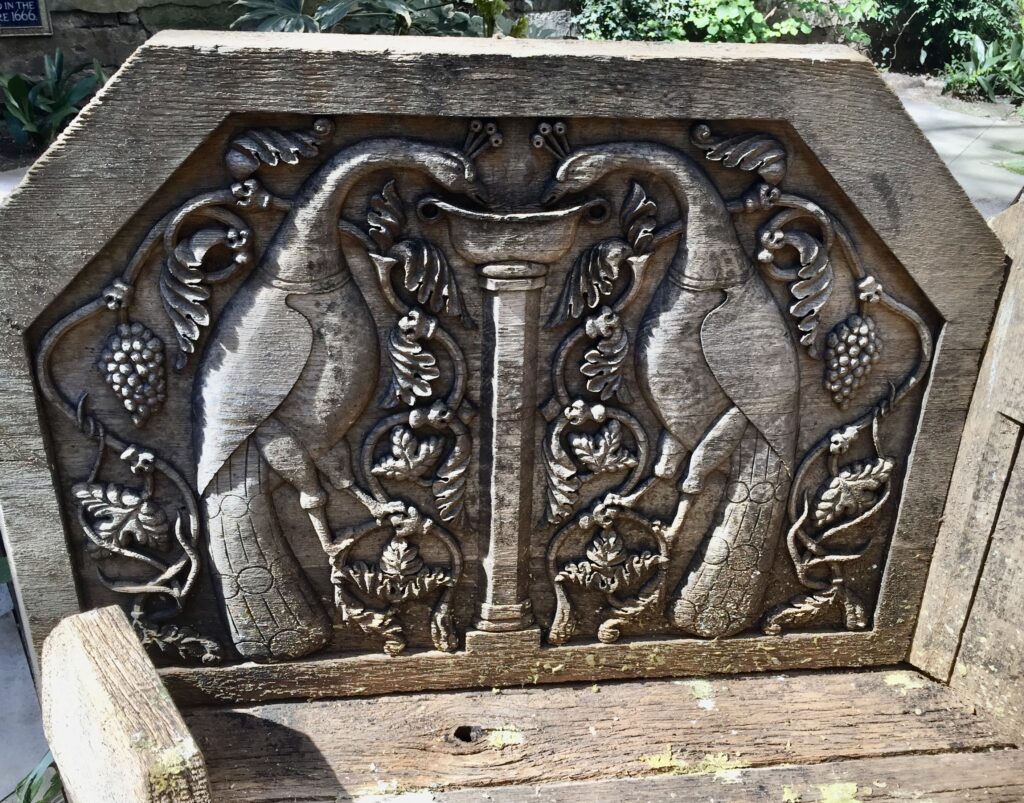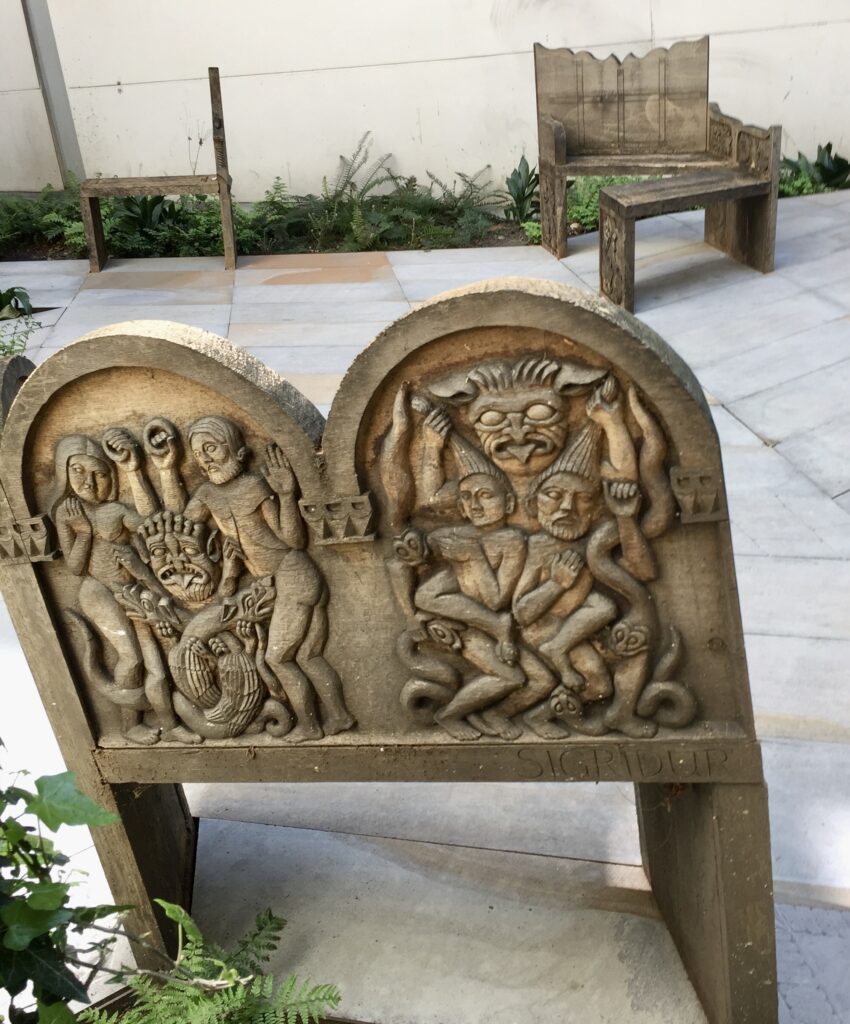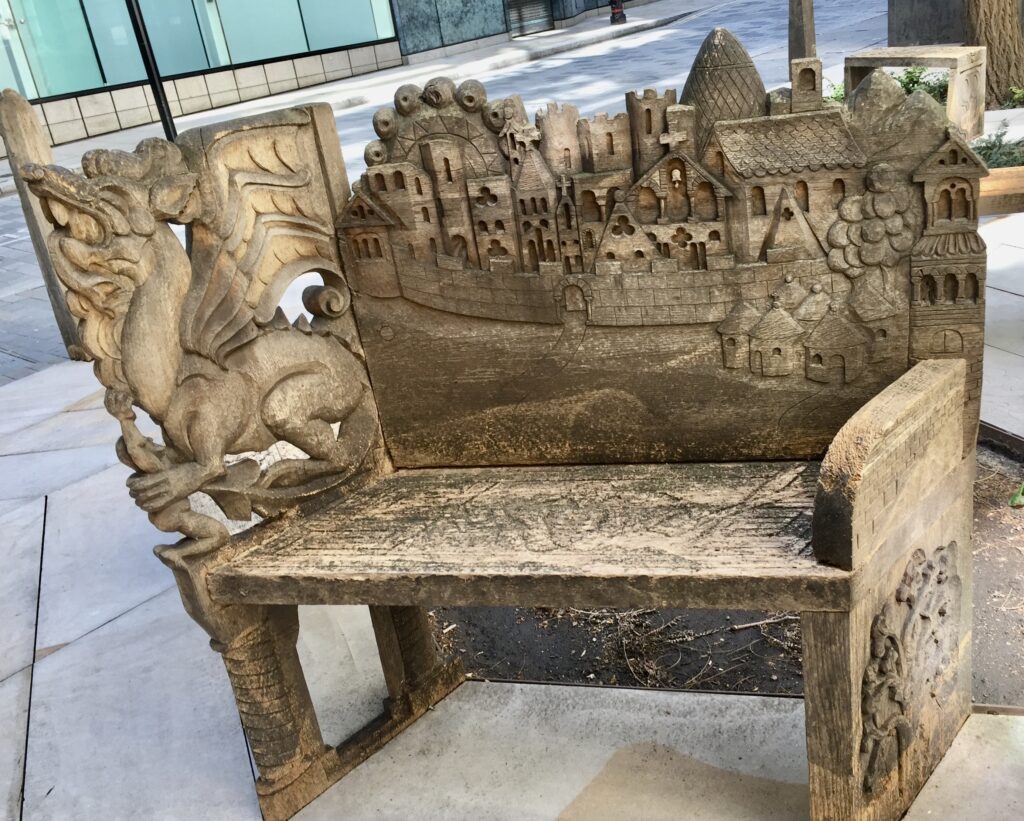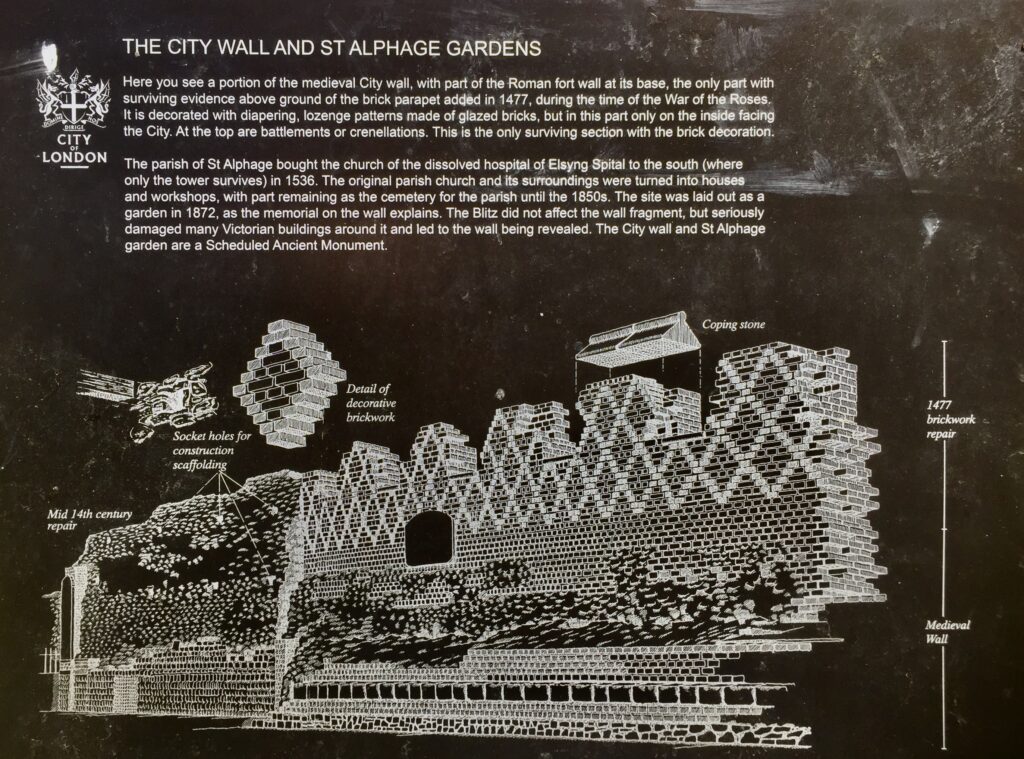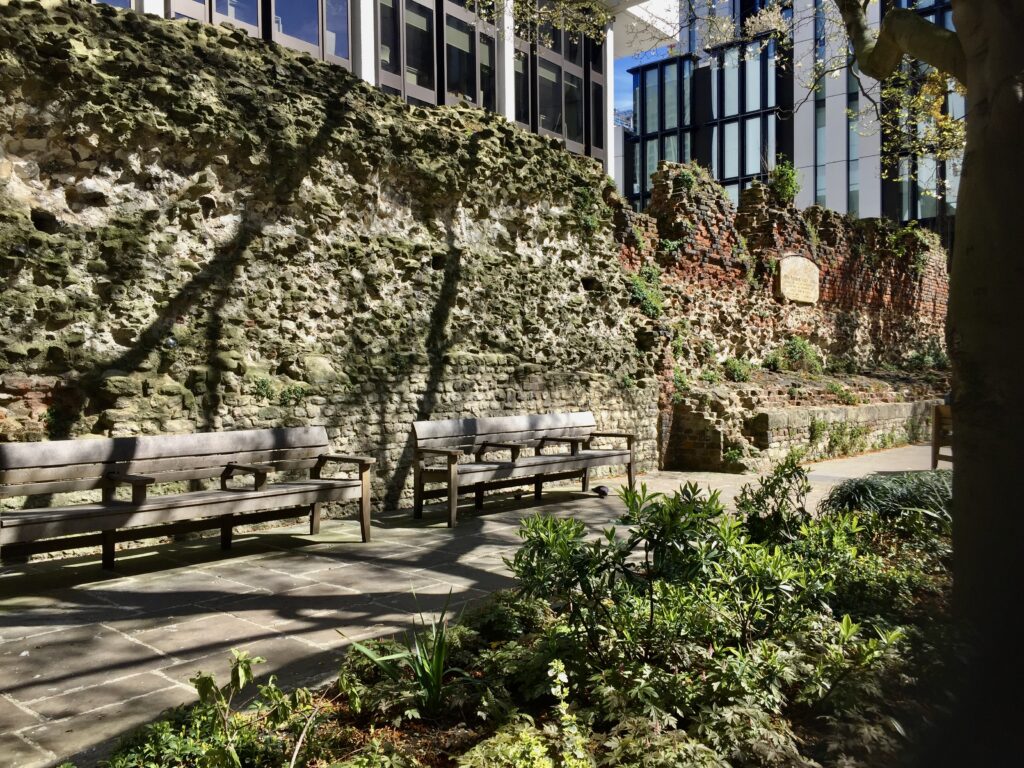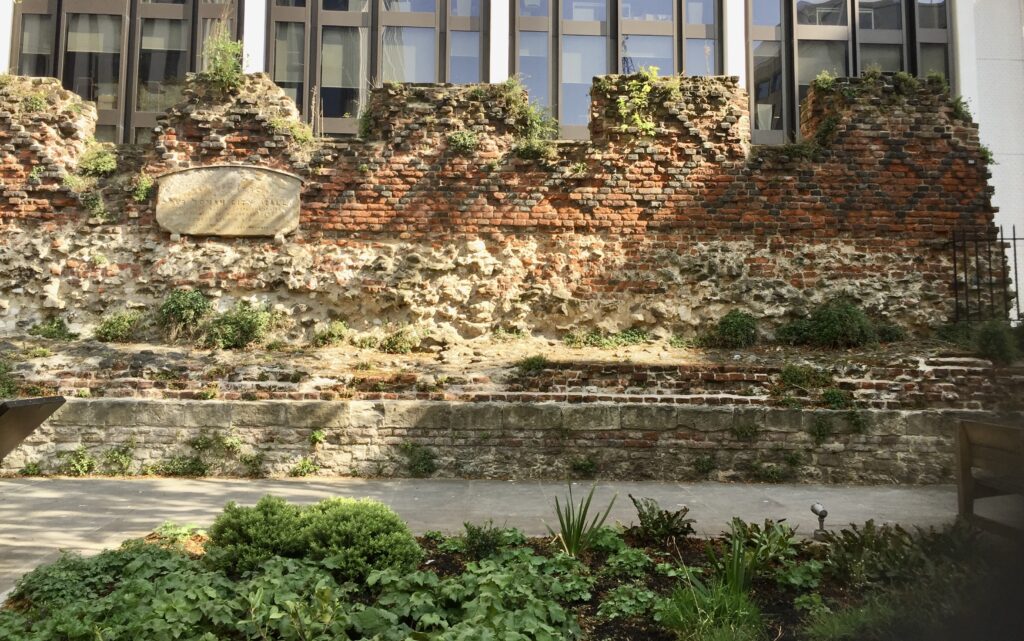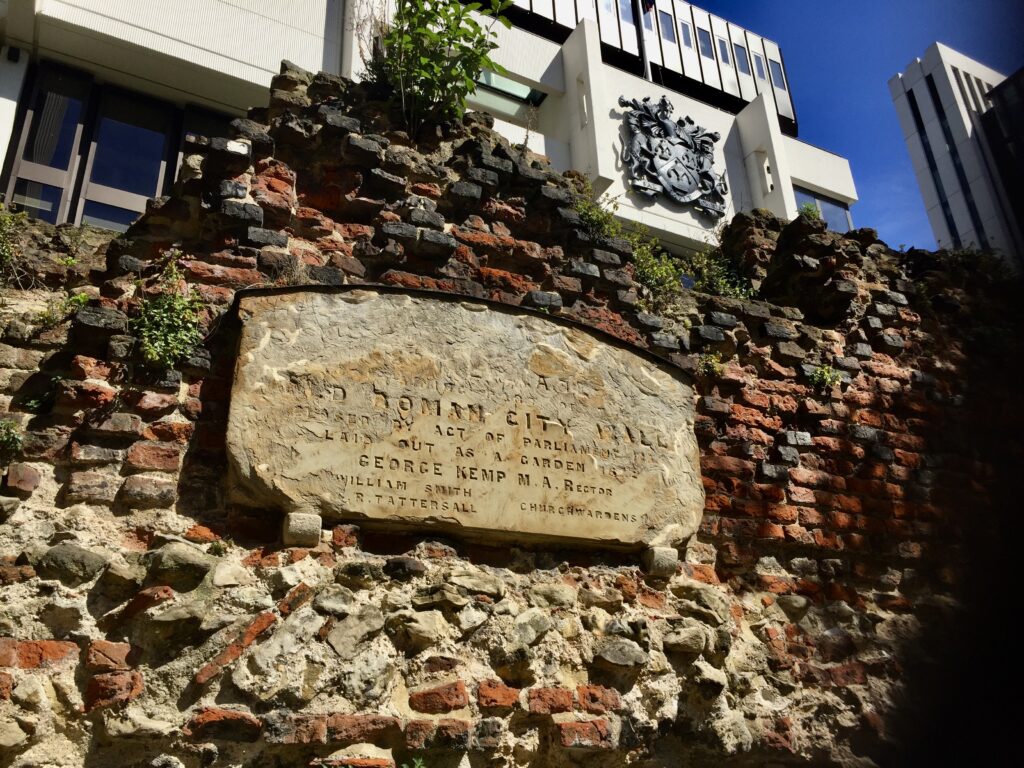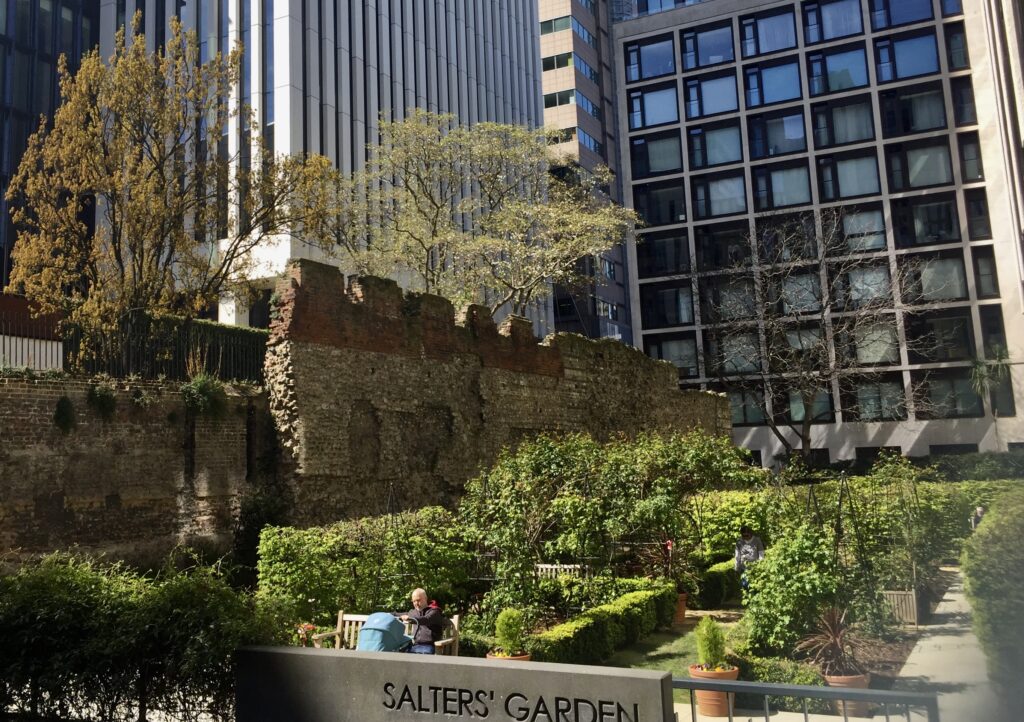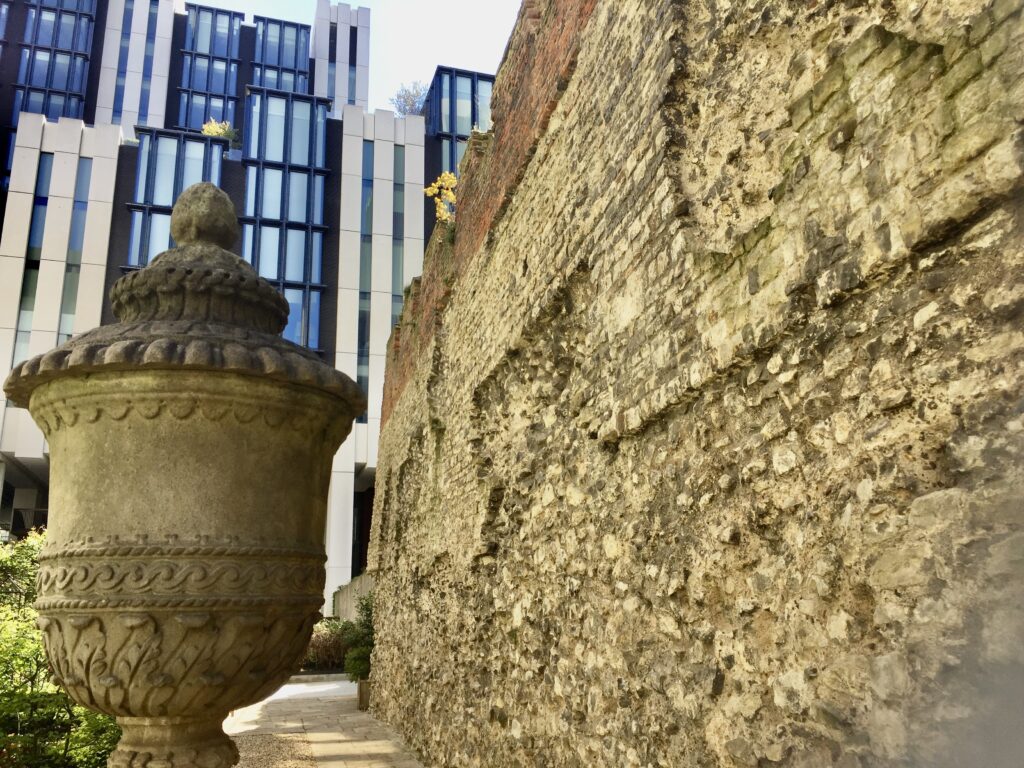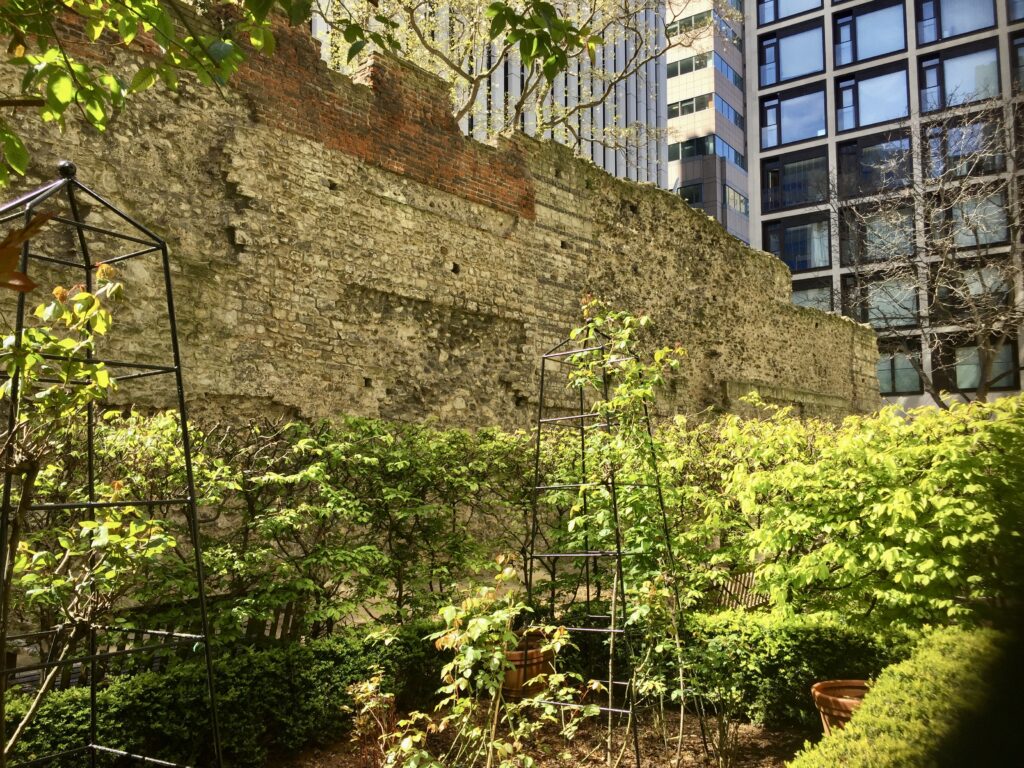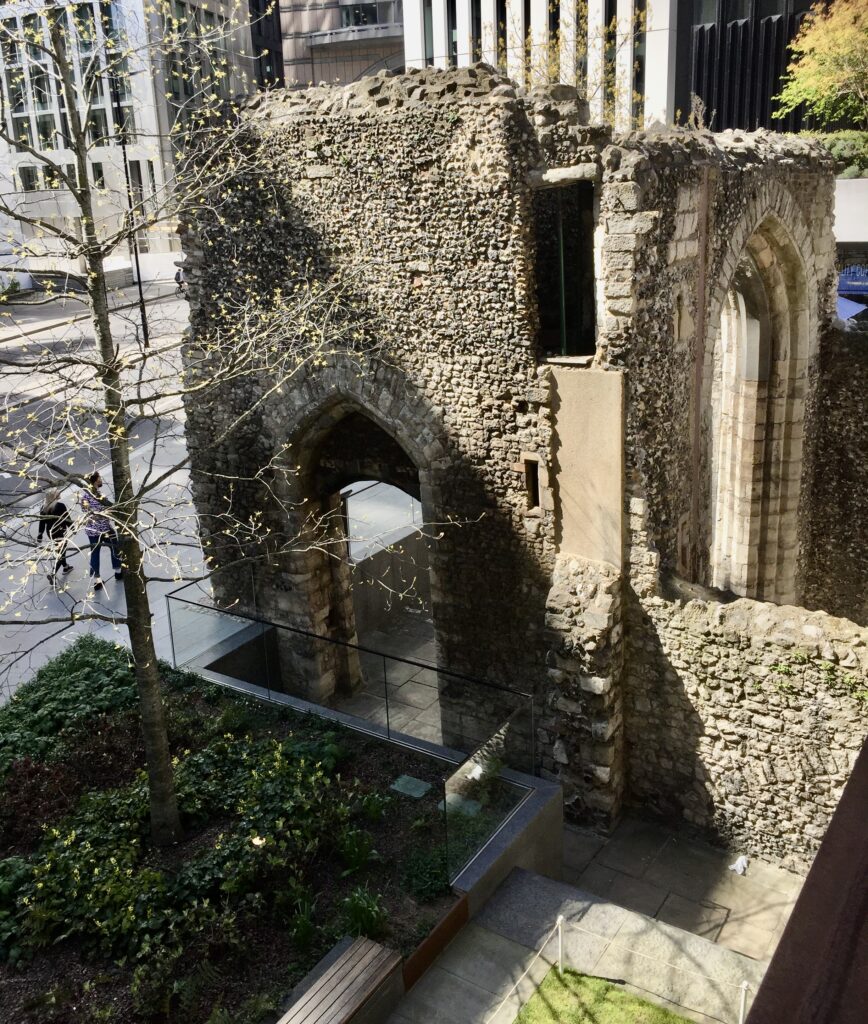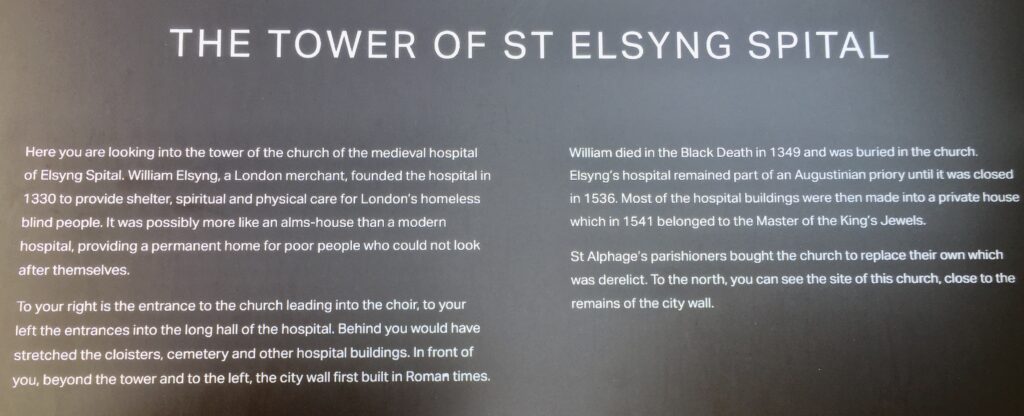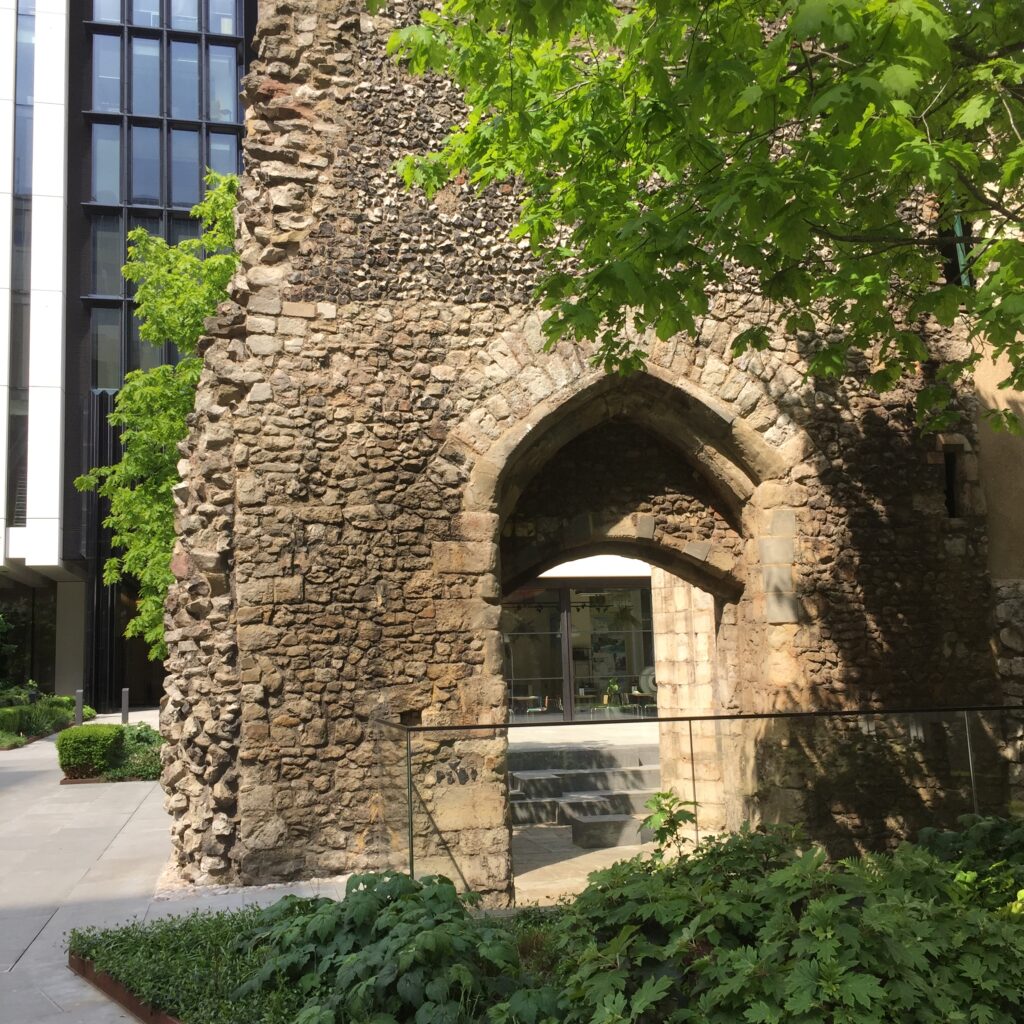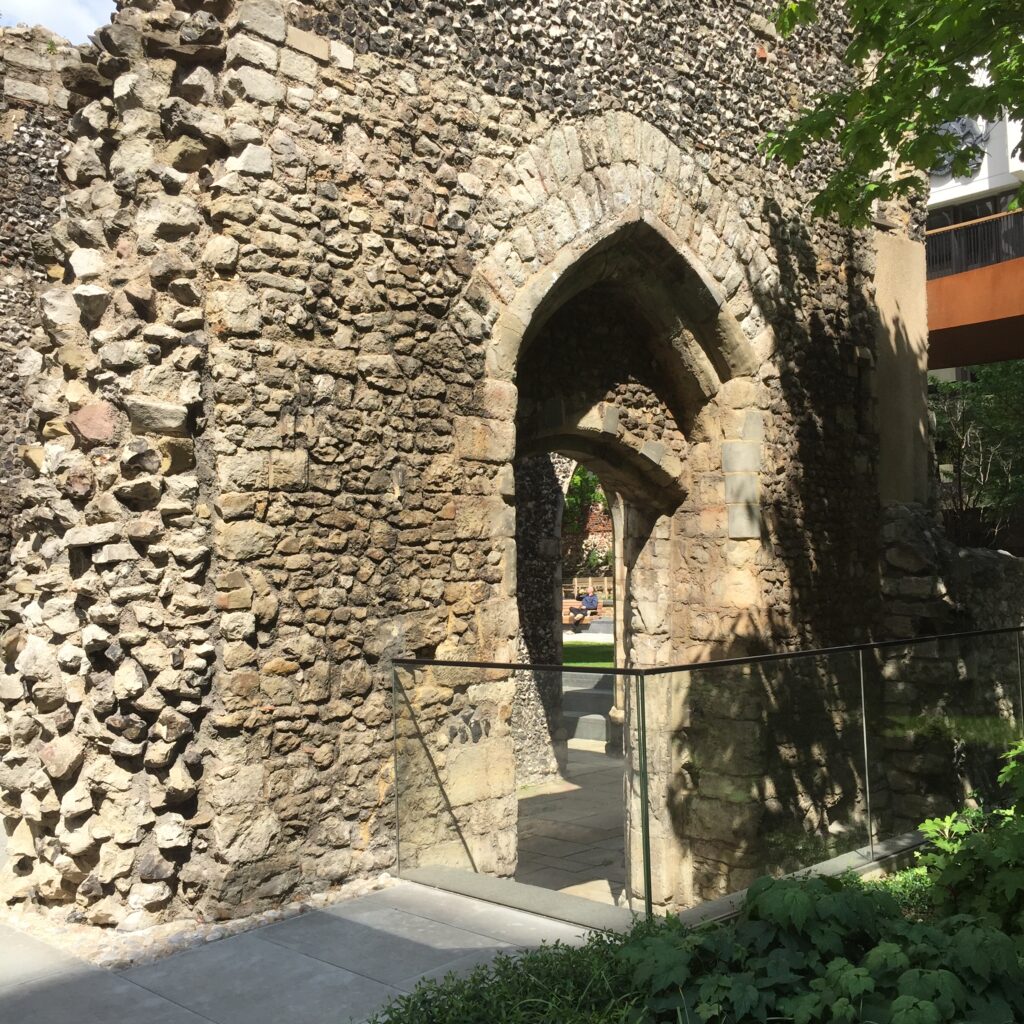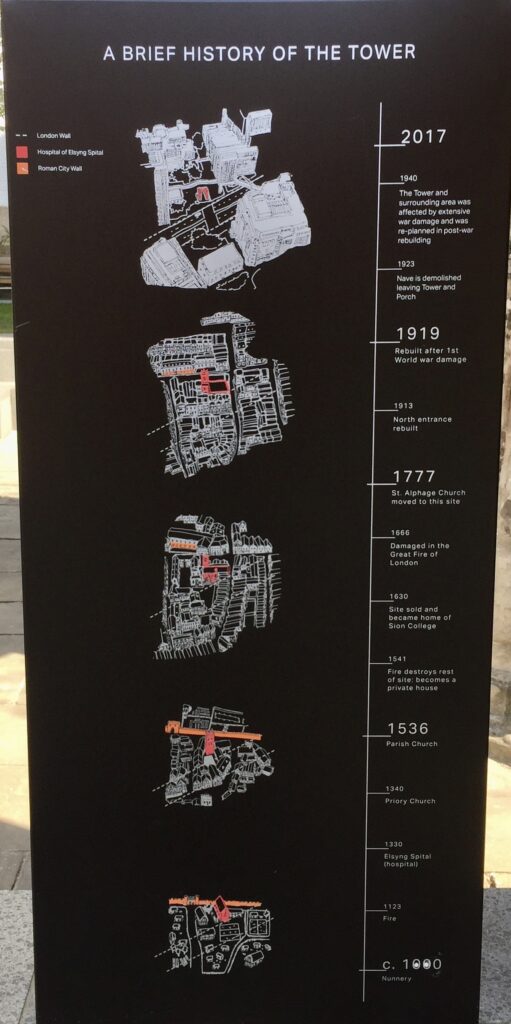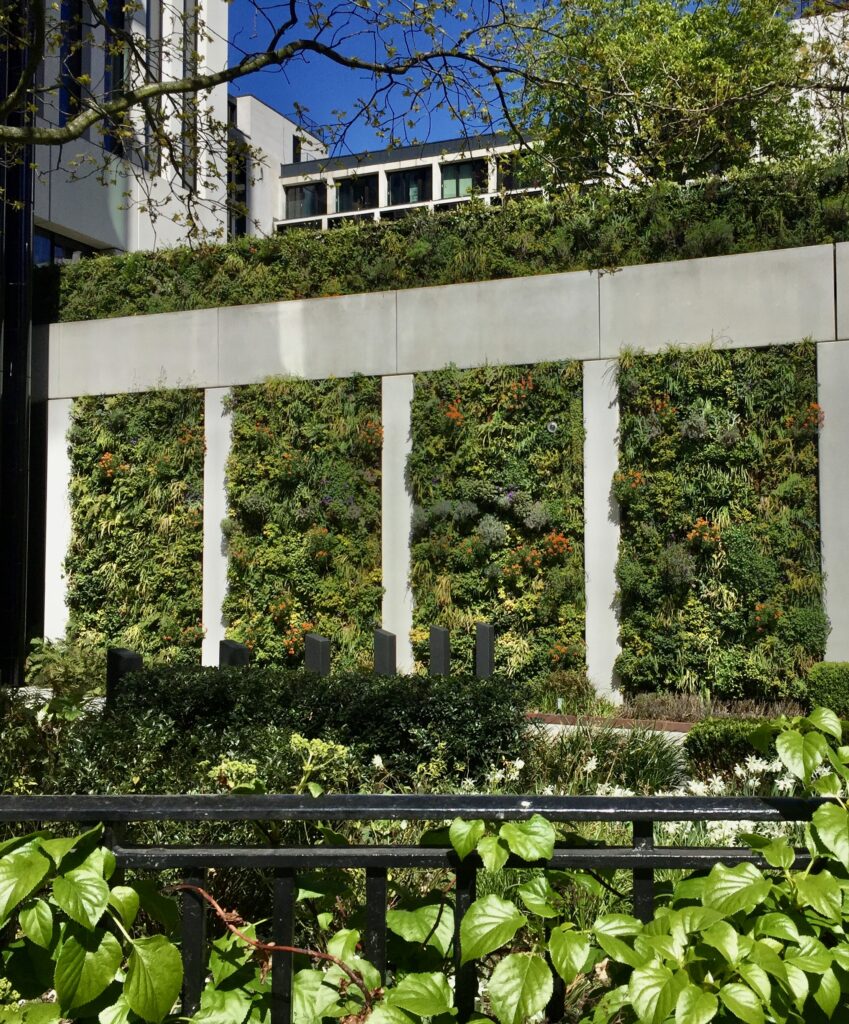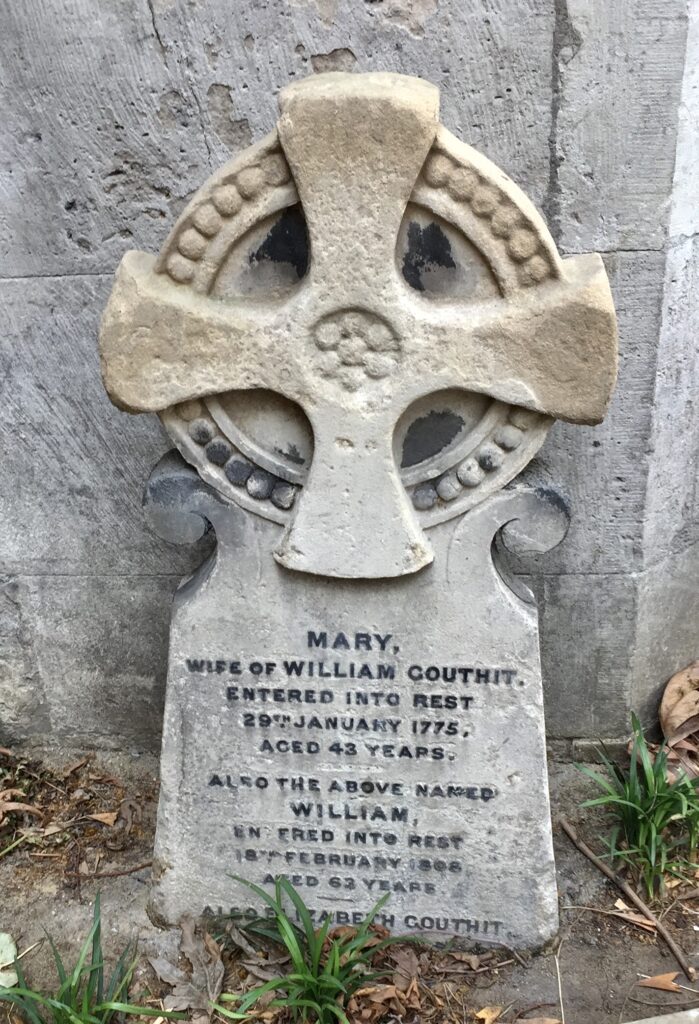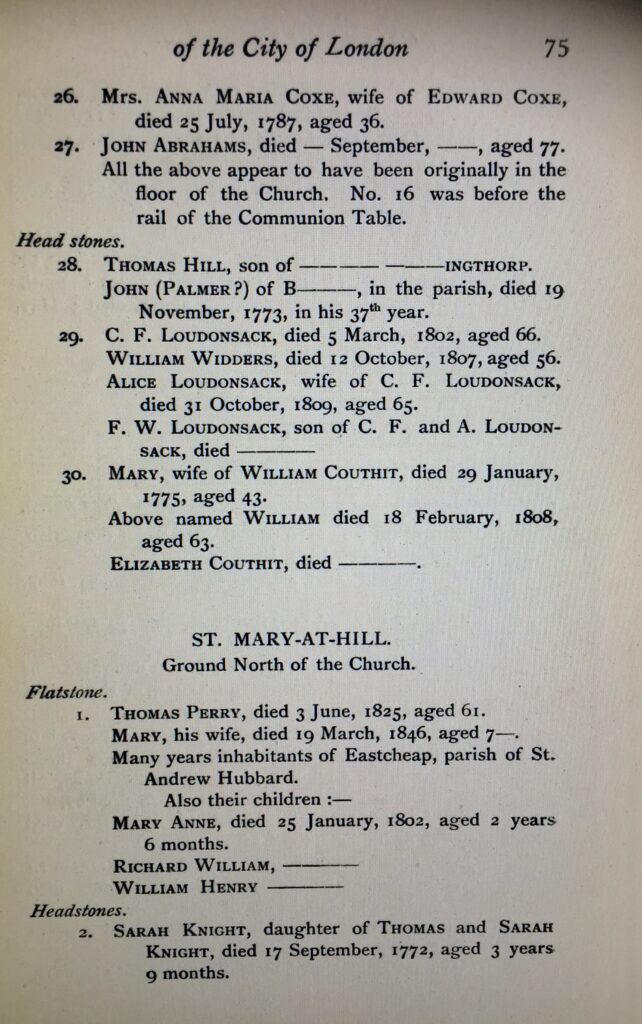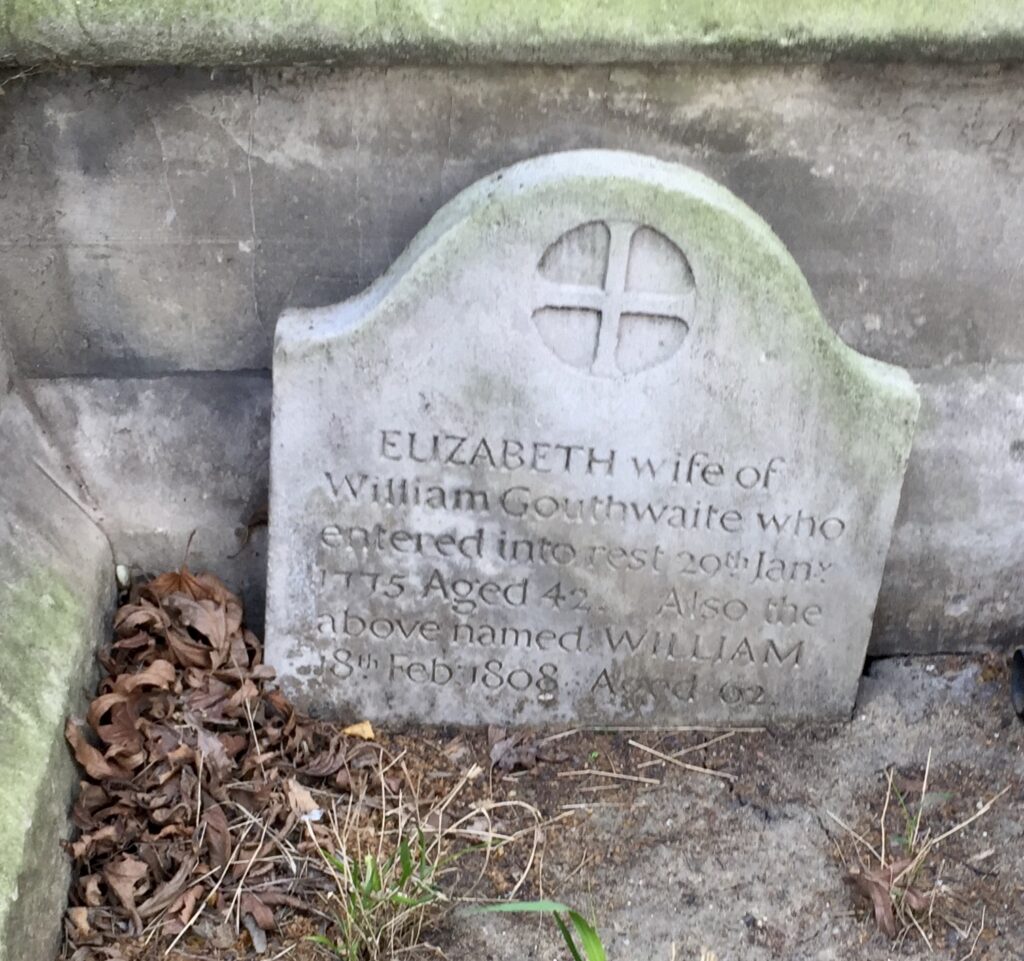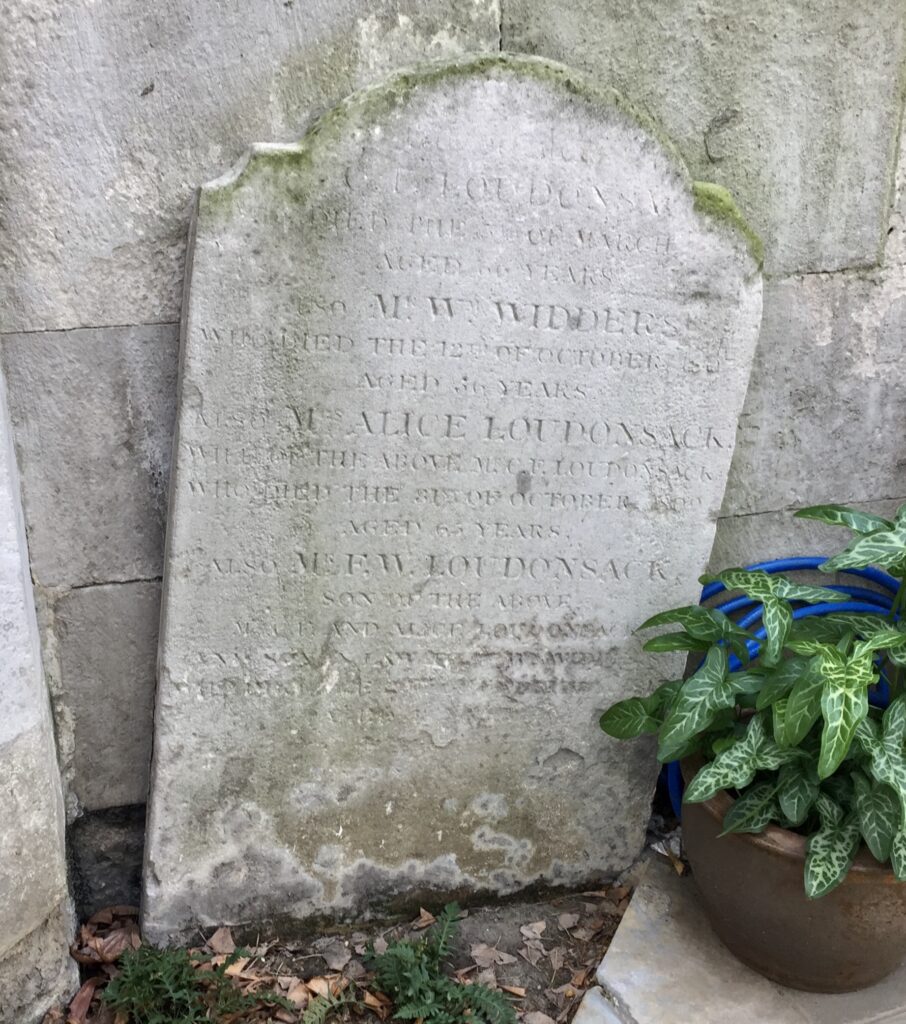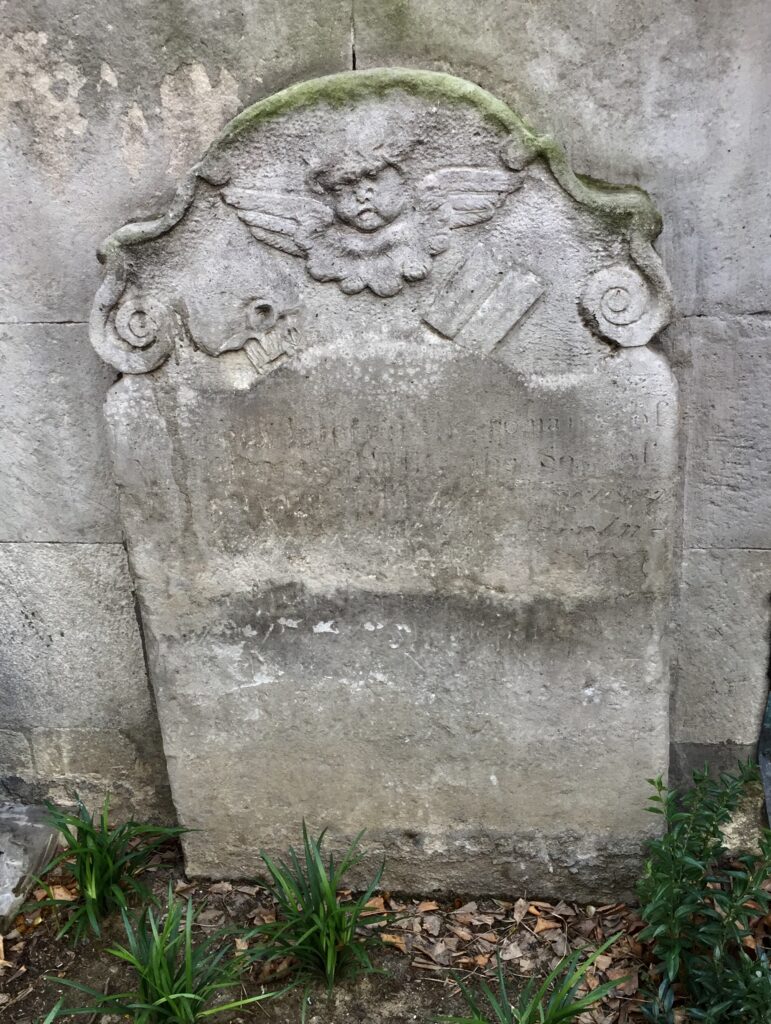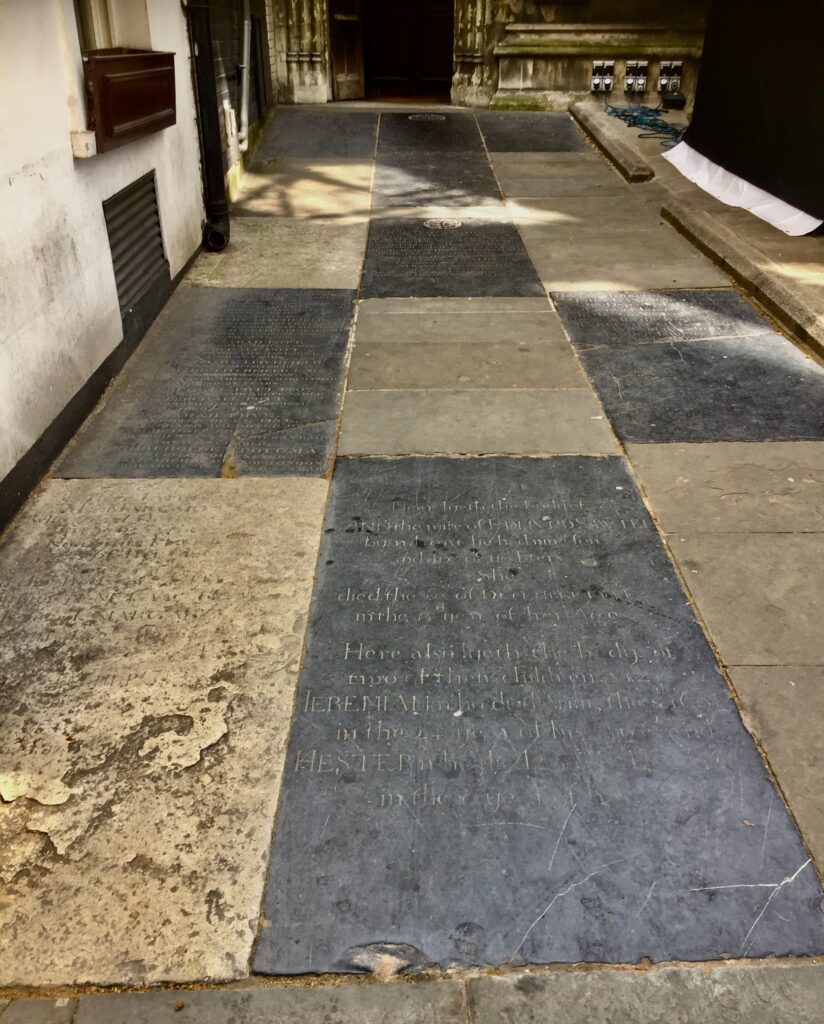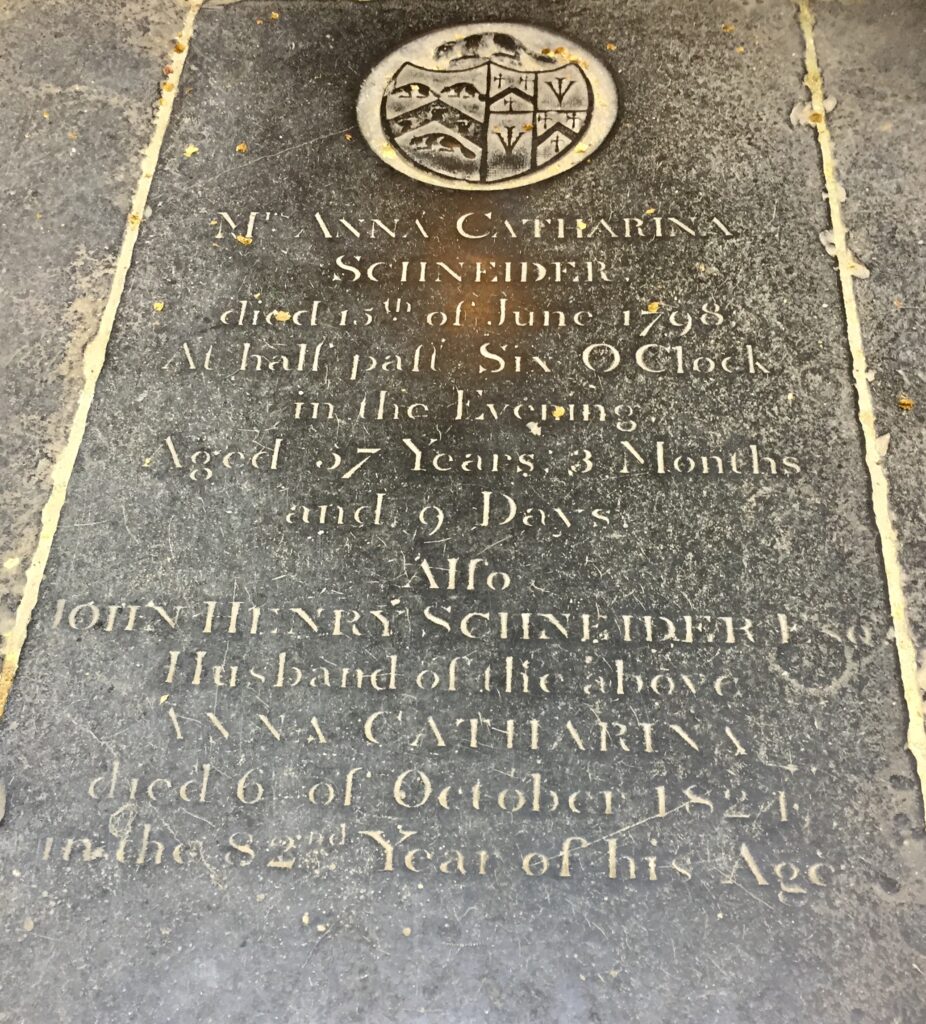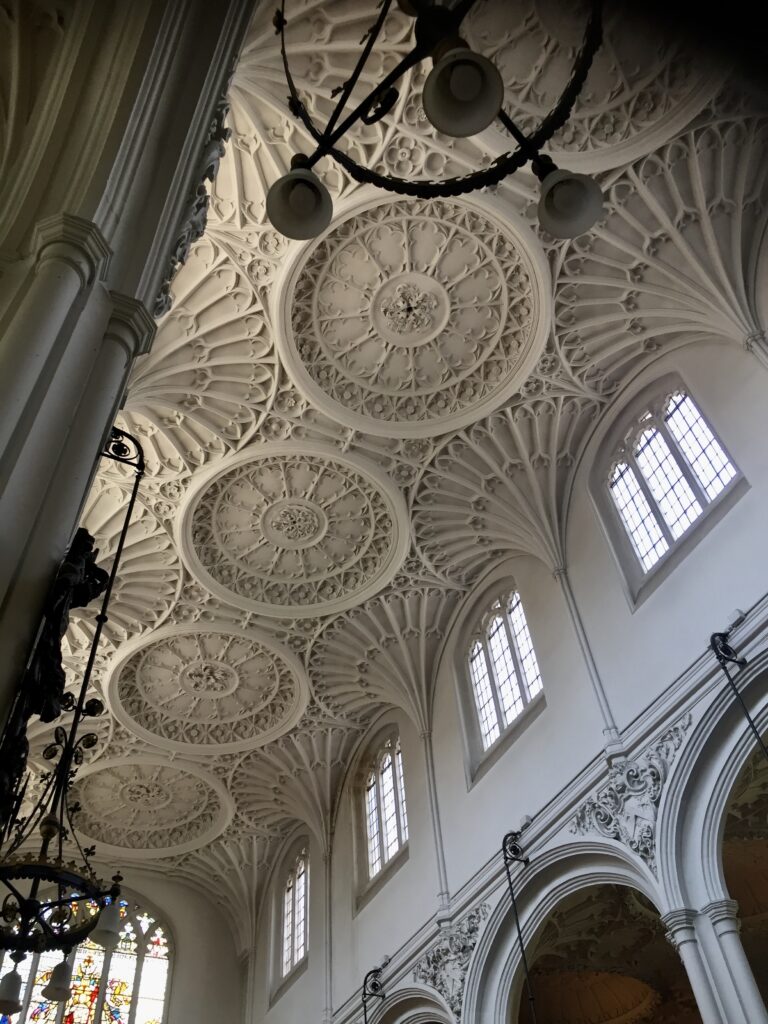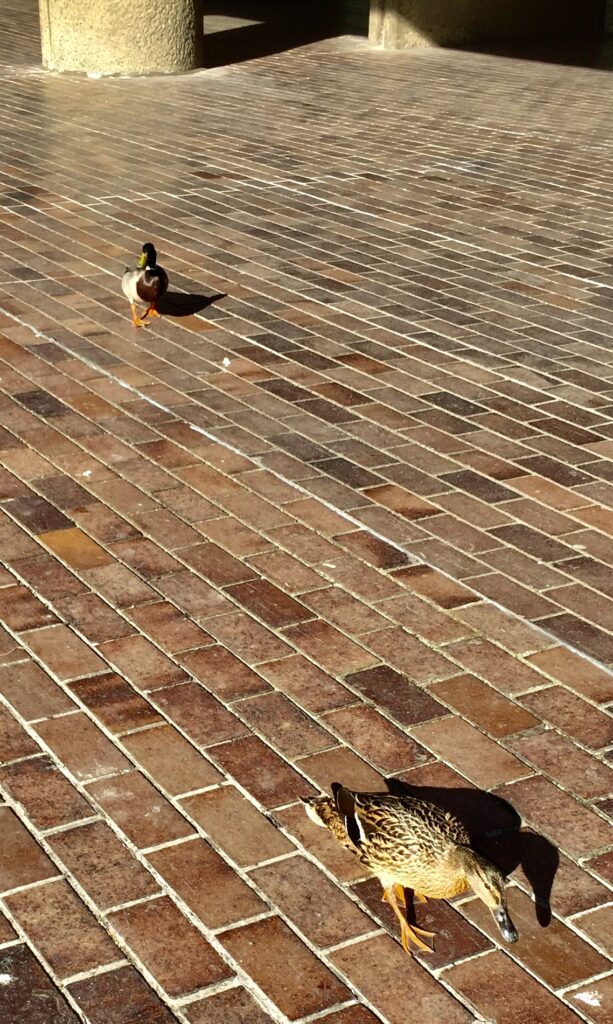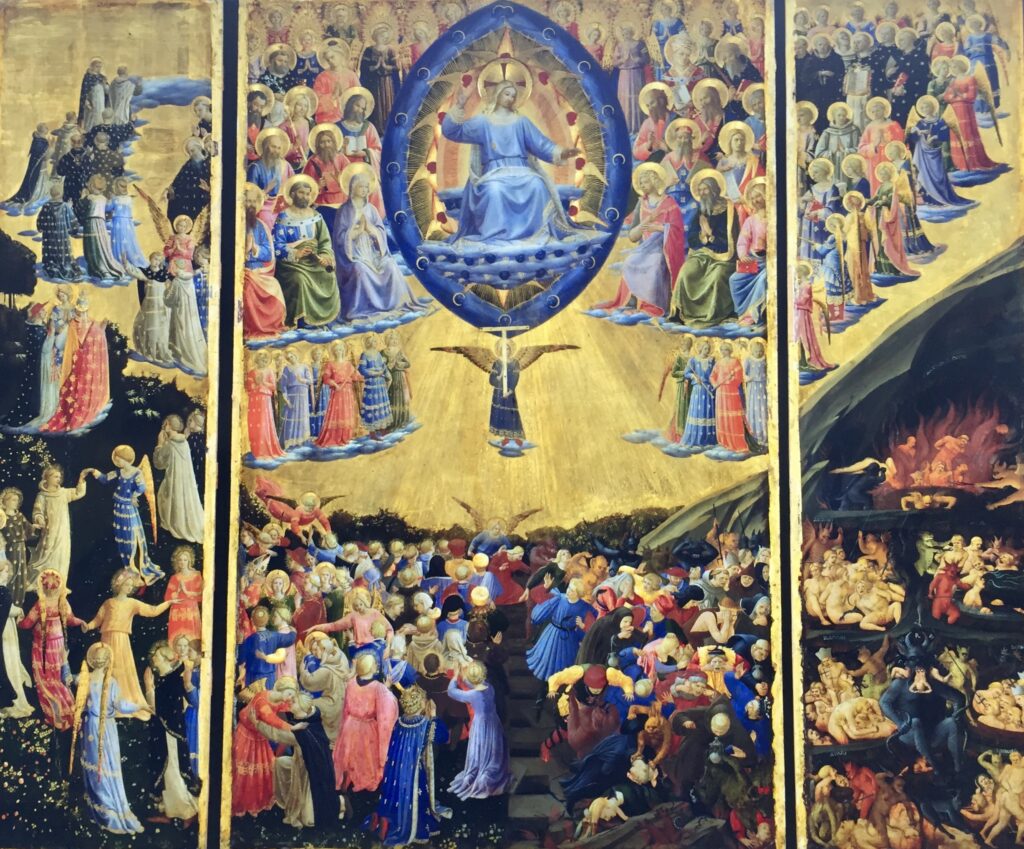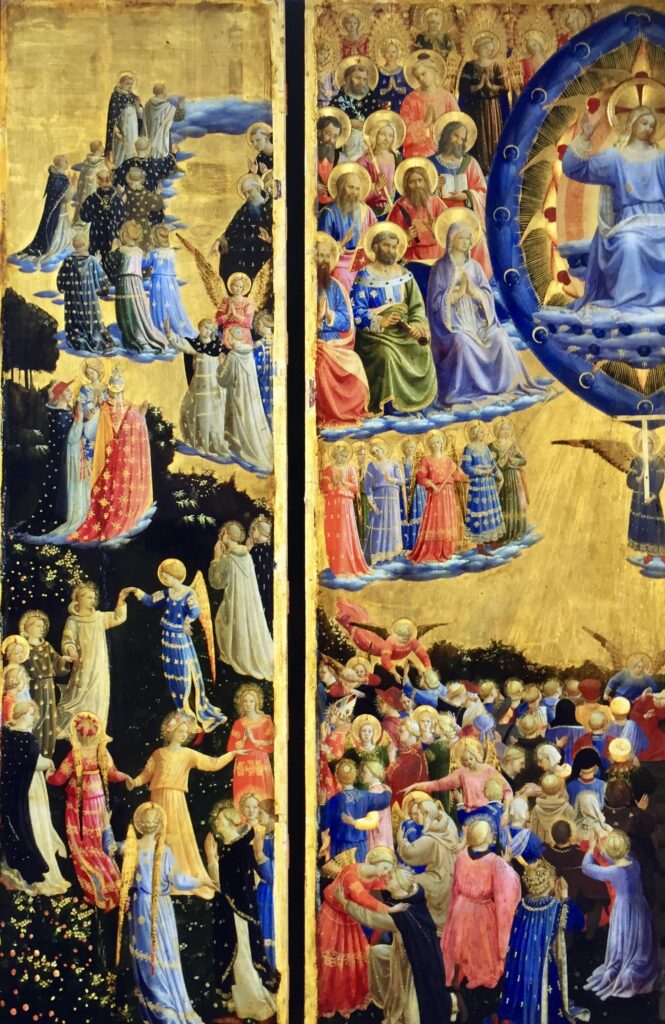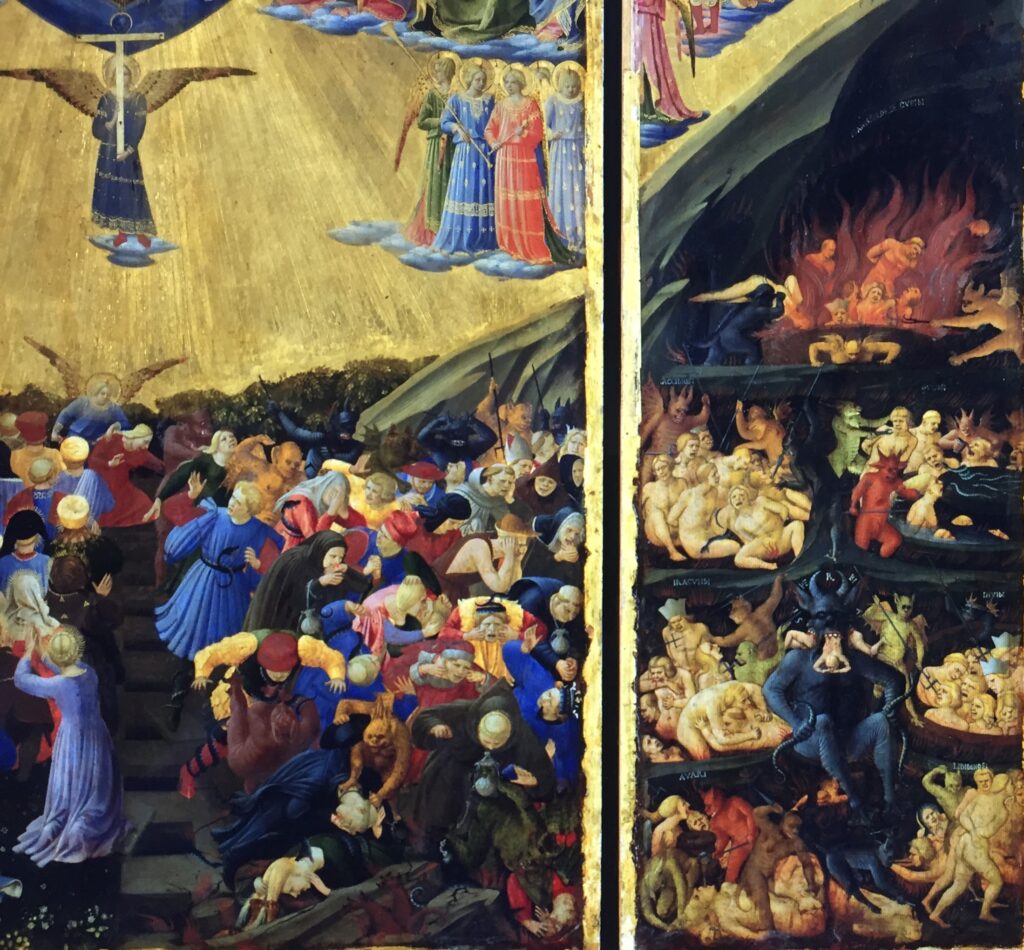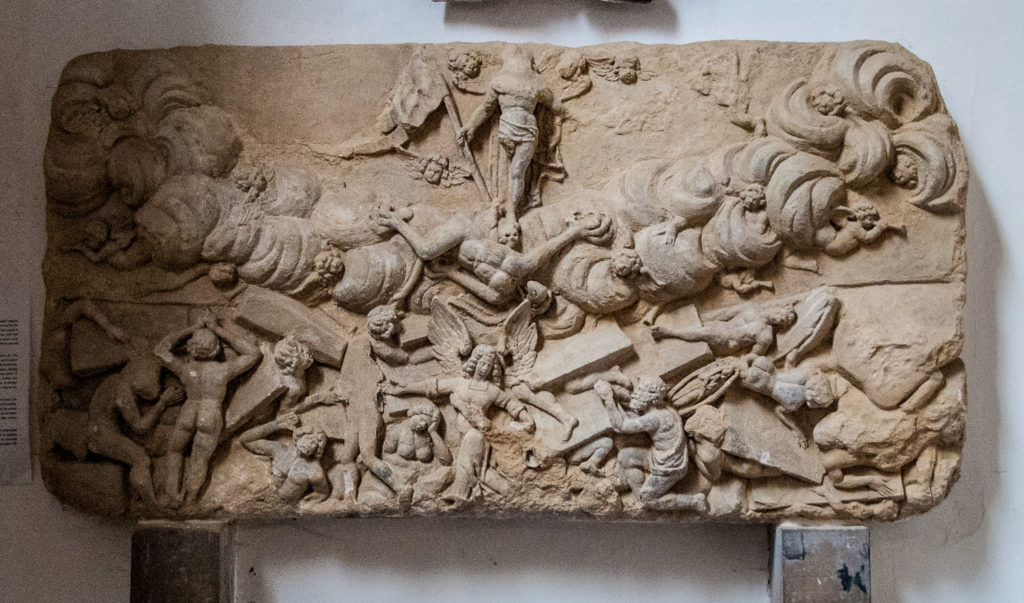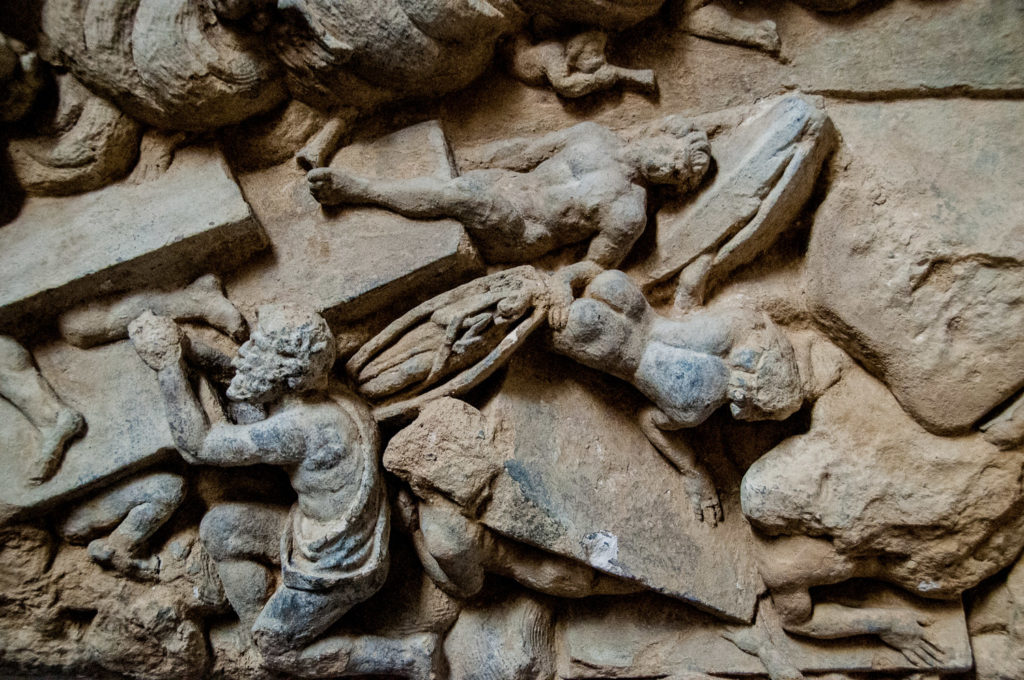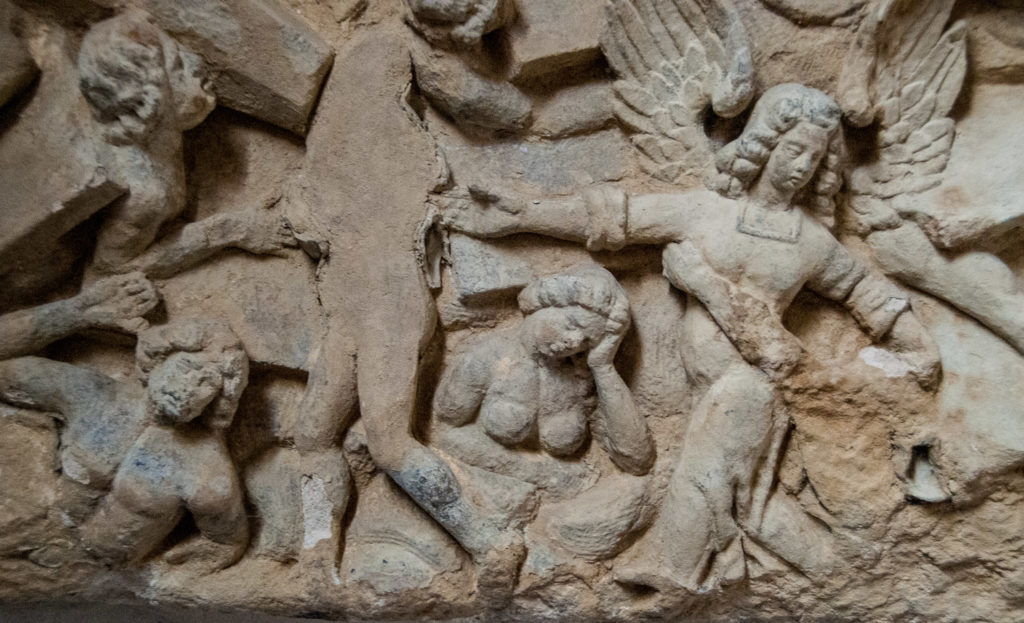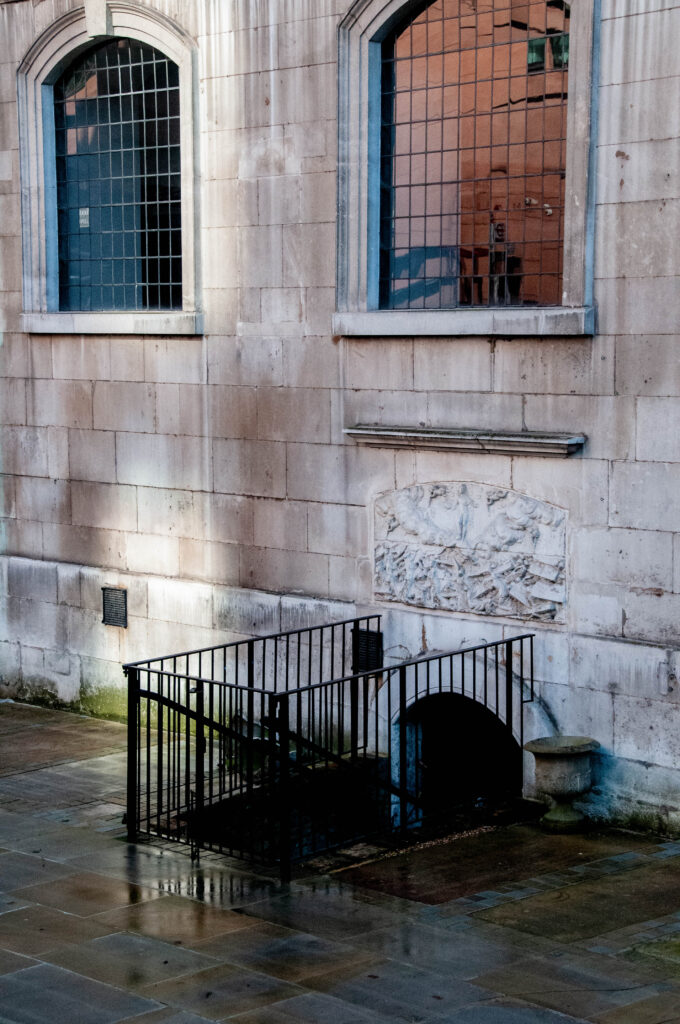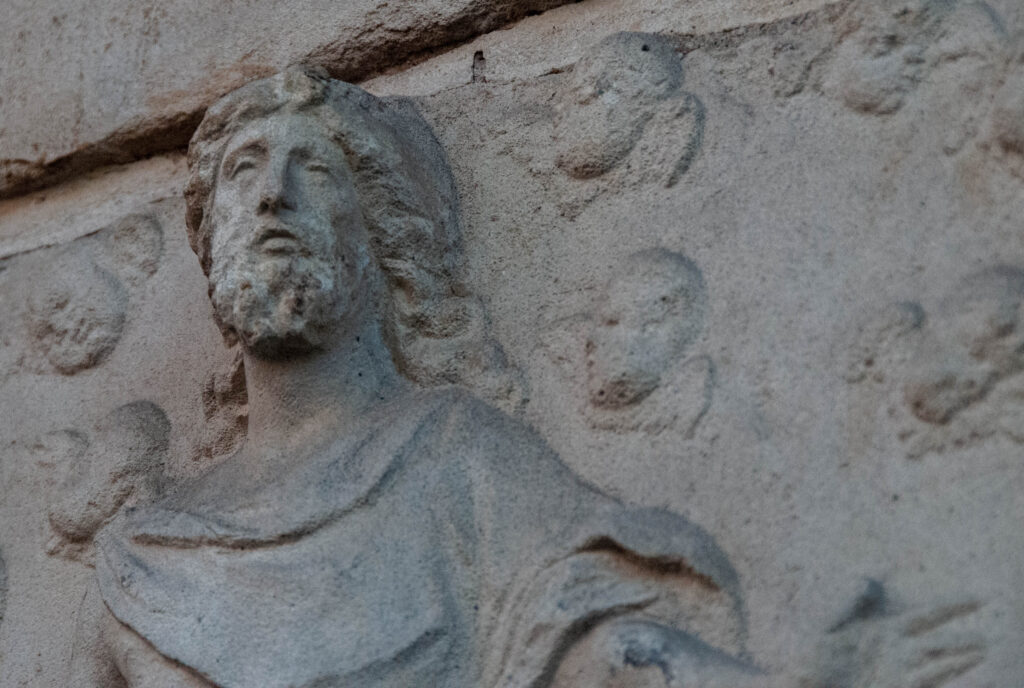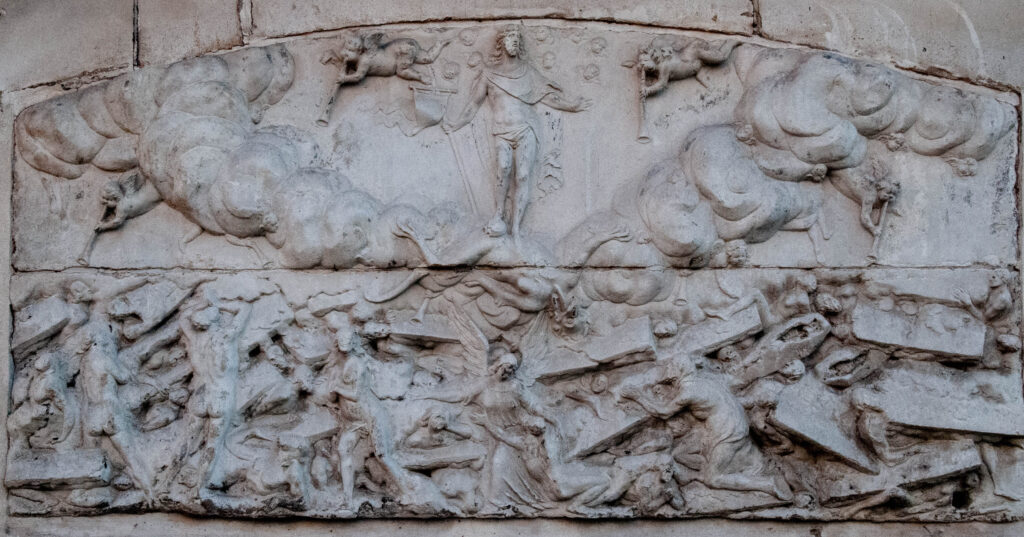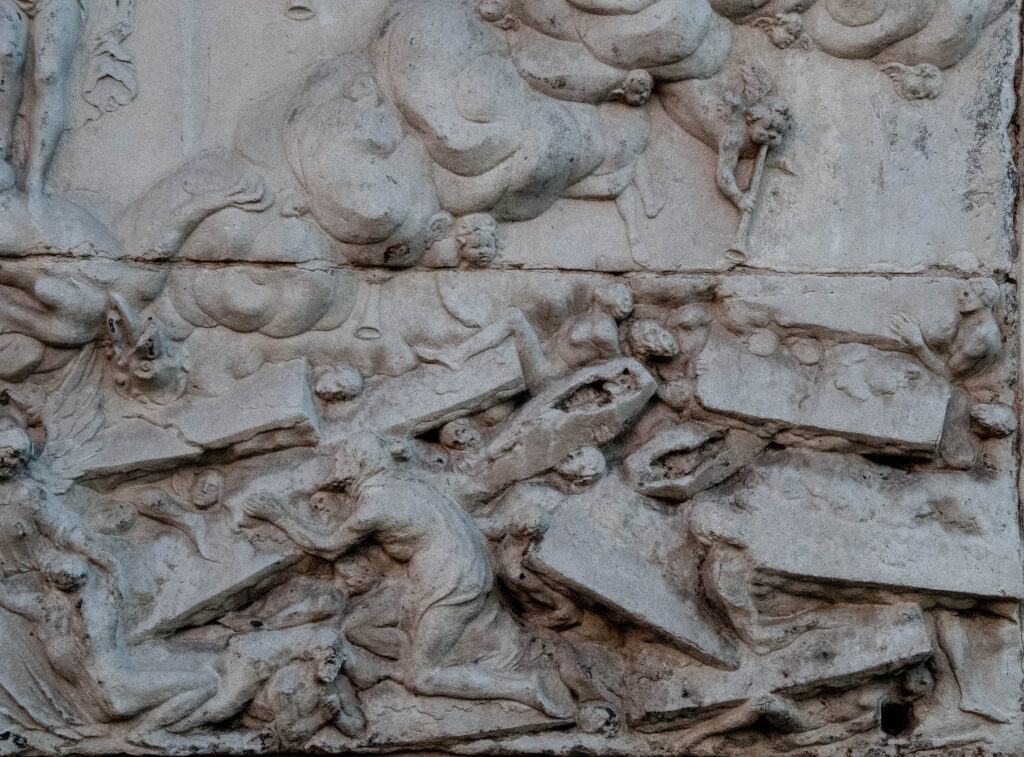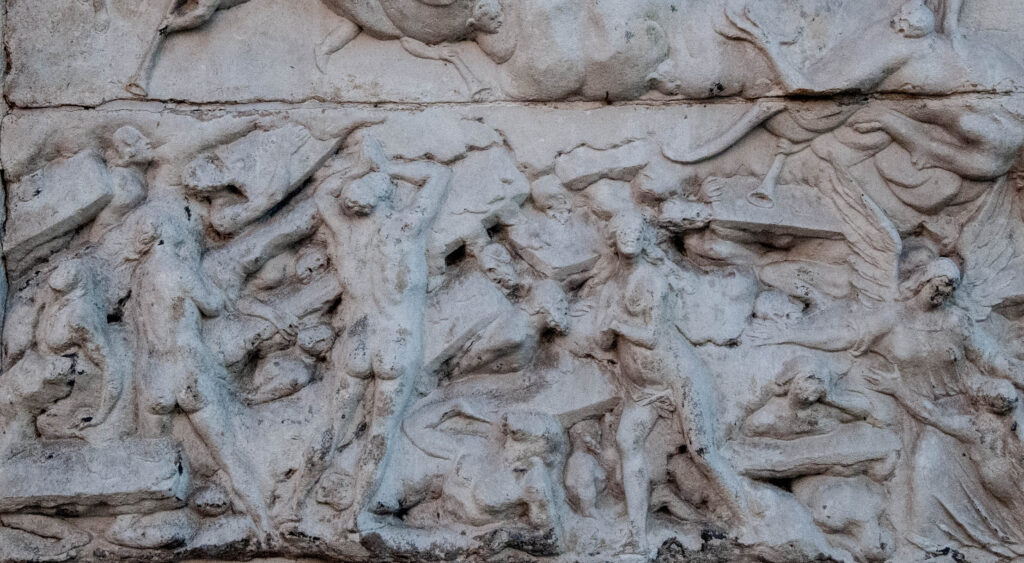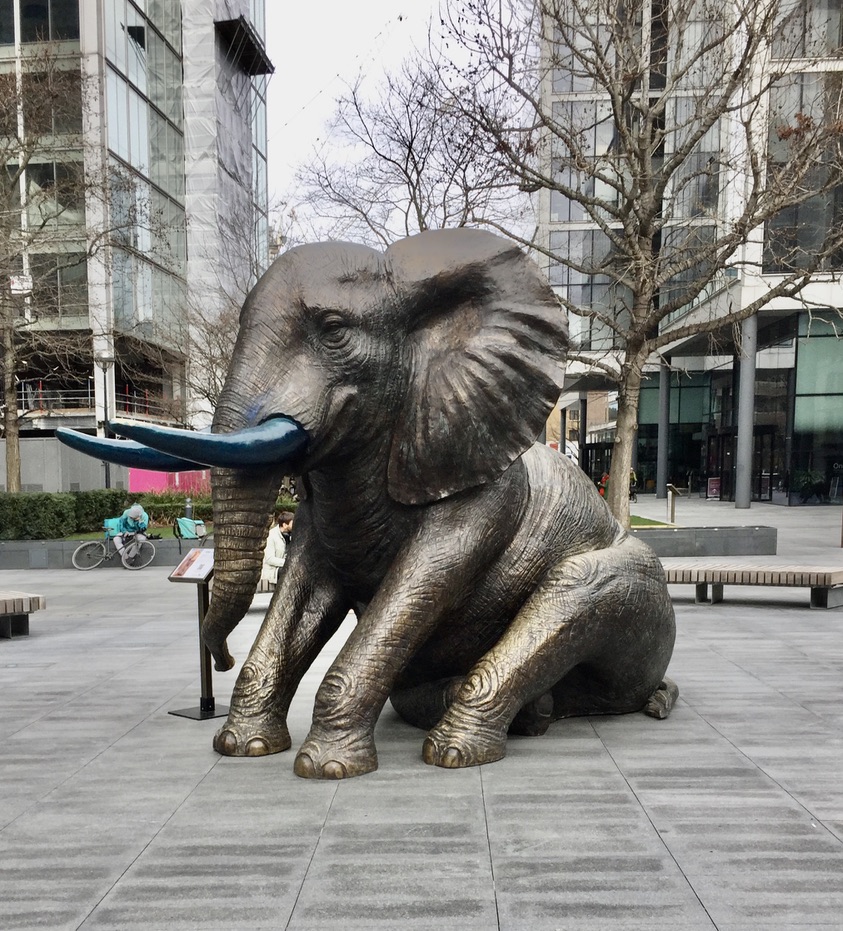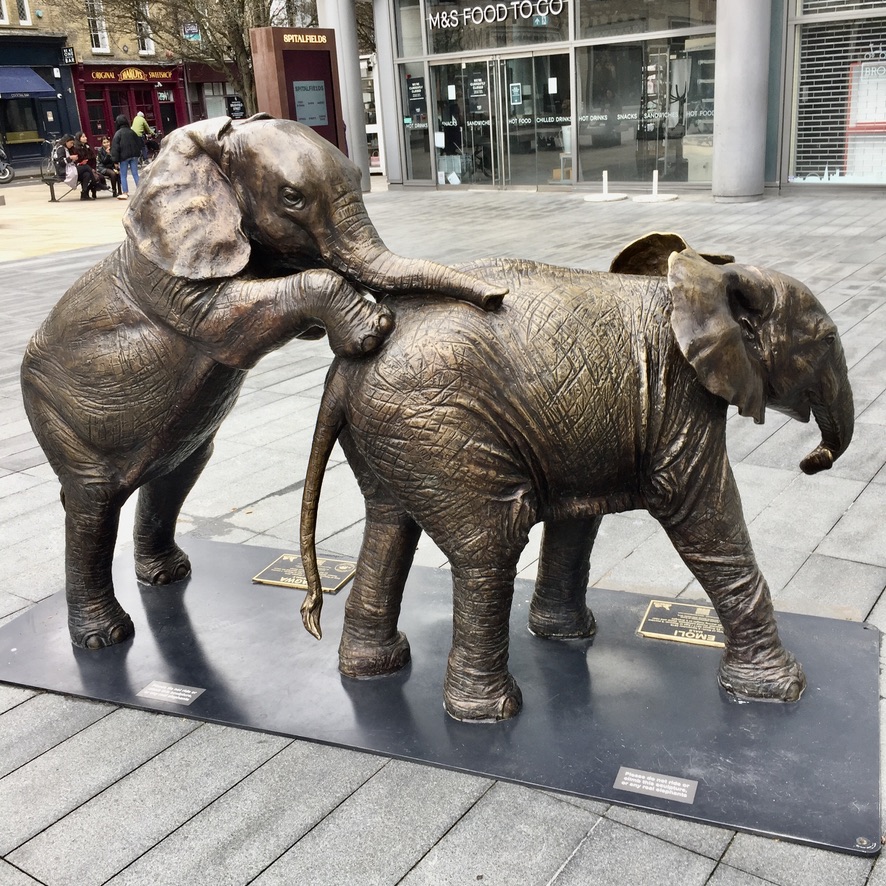Last Saturday I popped in to the wonderful Southwark Cathedral, paid £2 for a photography licence, and walked around entranced.
A few feet from the door is the magnificent Shakespeare Memorial Window, Designed by Christopher Webb, it was created in 1954 to replace another destroyed in enemy action. It shows characters from the Bard’s plays …
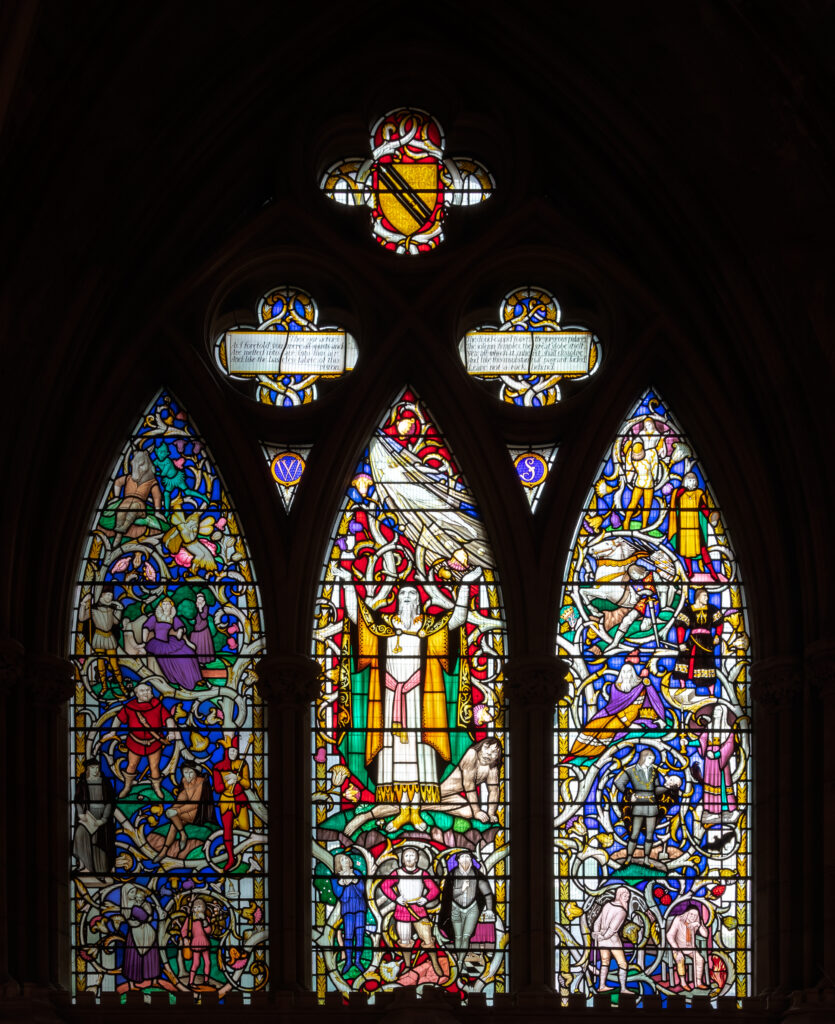
The design uses the concept of the Jesse Tree. Prospero in the central light forms the trunk, with Ariel above and Caliban at his feet …
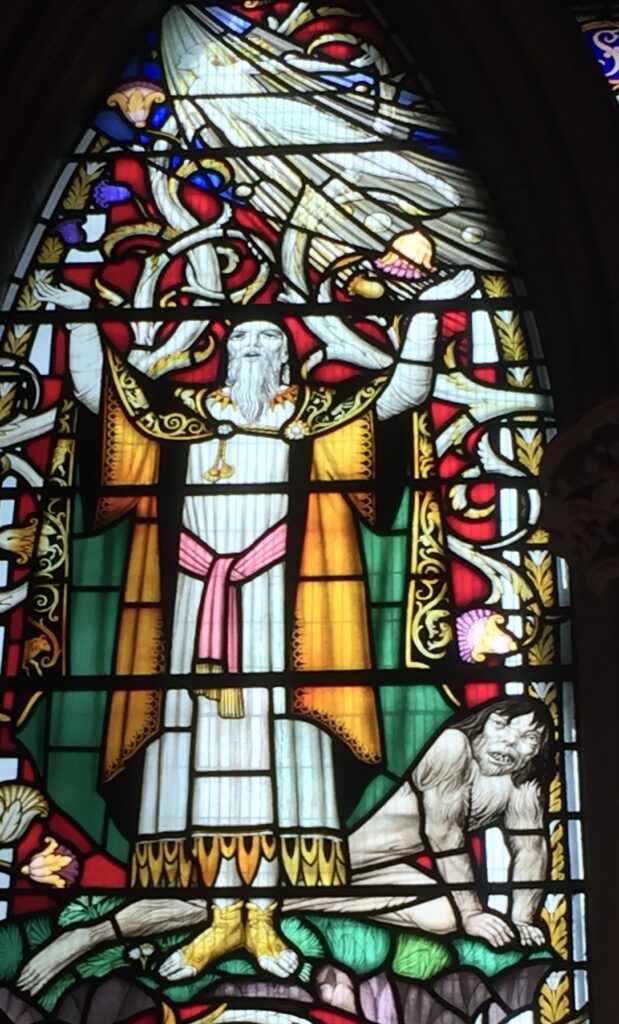
I’m sure you can spot Falstaff …
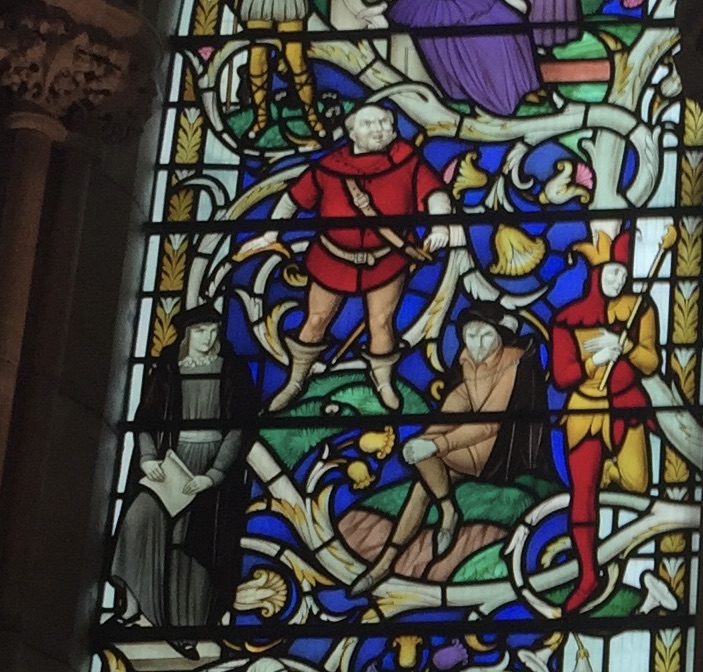
In the right hand window we find Lady Macbeth ,,,
Is this a dagger which I see before me, the handle toward my hand? Come, let me clutch thee …
and Hamlet …
Alas, poor Yorick! I knew him, Horatio: a fellow of infinite jest, of most excellent fancy …
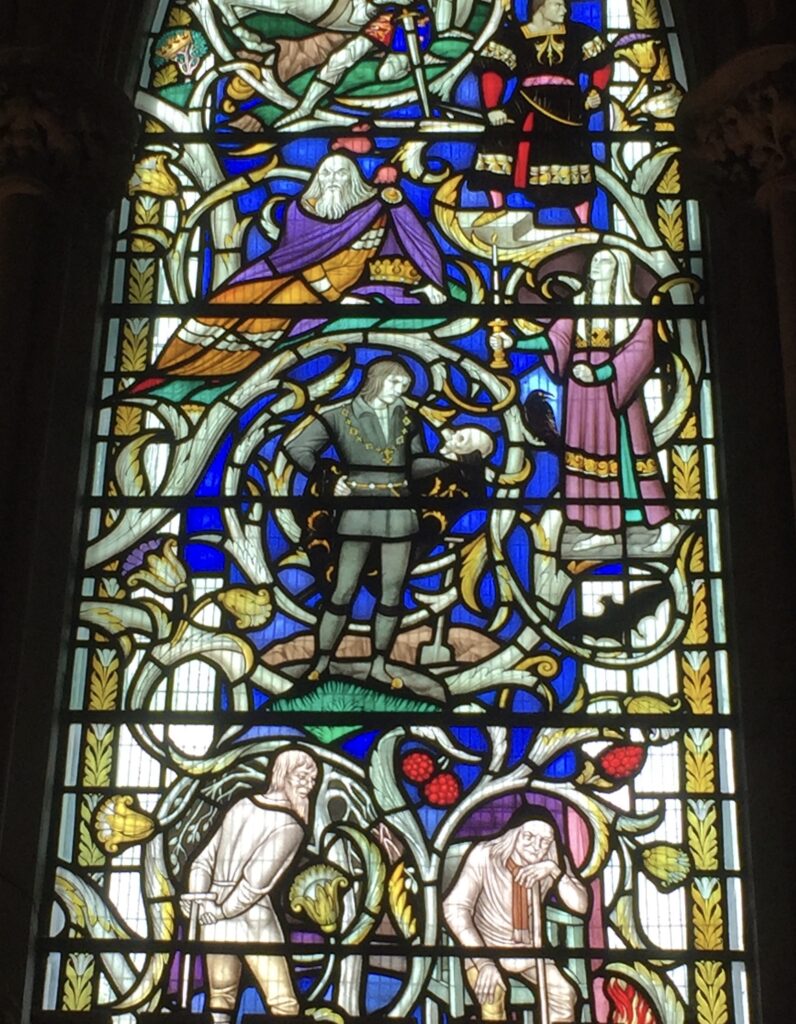
At the base, the last two of the Seven Ages of Man … …
The sixth age slips into the lean and slippered pantaloon, with spectacles on nose … and his big manly voice turning again toward childish treble … Last scene of all, is second childishness … sans teeth, sans eyes sans everything.
All the characters portrayed in the window are identified in this short article.
Below the window is an alabaster sculpture. Made by Henry McCarthy in 1912, it shows the world’s most famous playwright resting outside the Globe Theatre. He usually has a sprig of rosemary in his hand. The aromatic herb rosemary, as Ophelia says to her brother Laertes in Hamlet, is for remembrance; ‘pray, love remember’ …
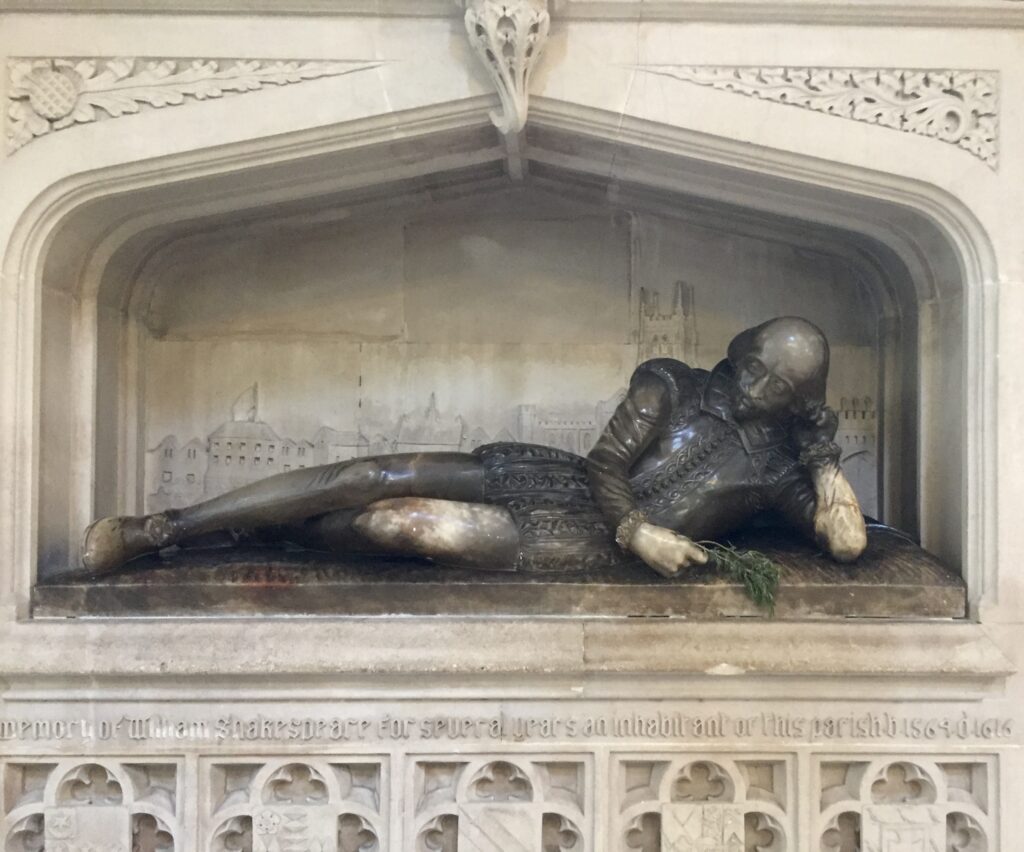
I was very taken with this remarkably lifelike bust …
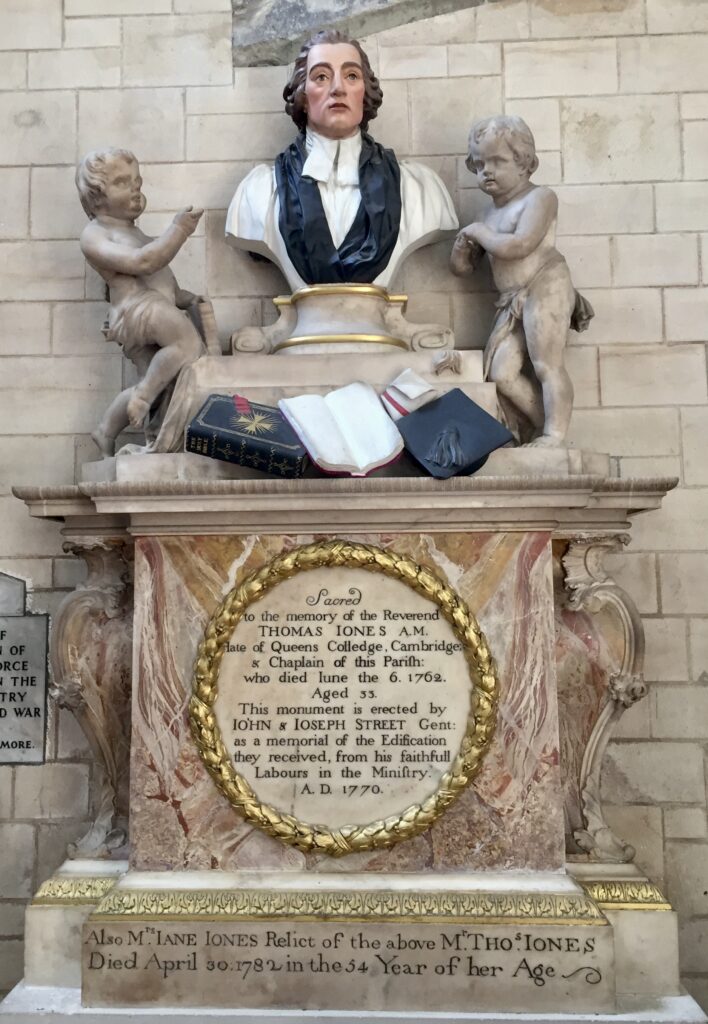
This is Lancelot Andrewes (1555 – 25 September 1626), the English bishop and scholar who oversaw the translation of the King James Version of the Bible …
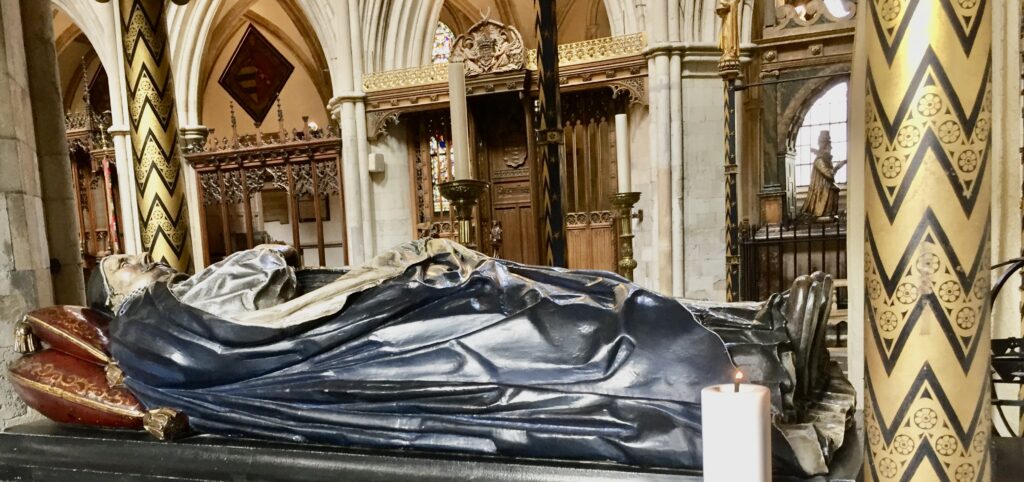
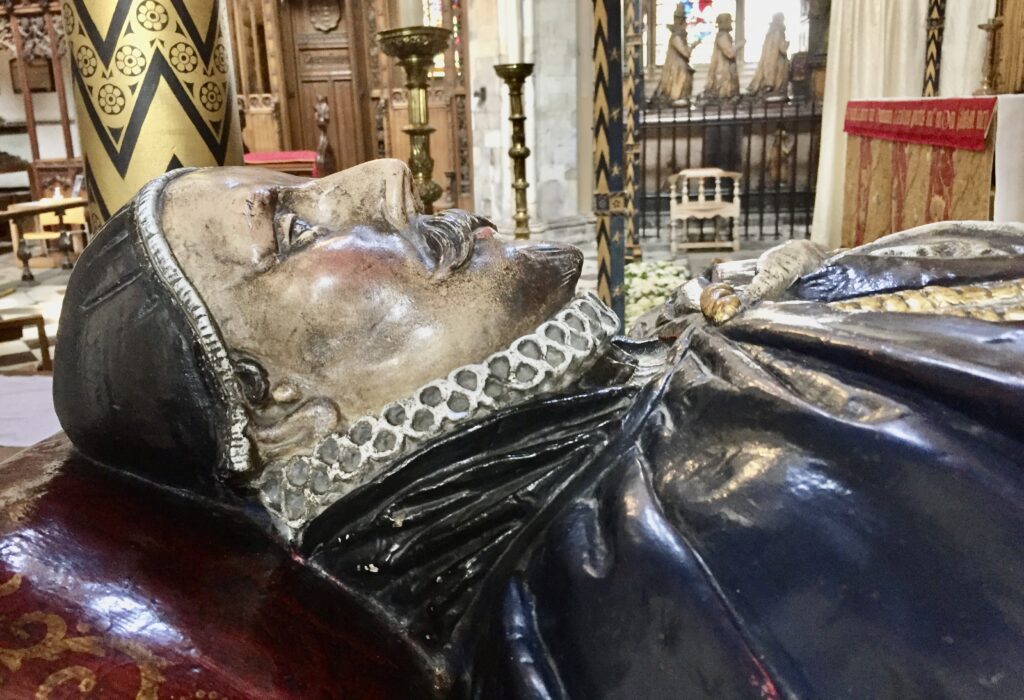
Most importantly, I live in a block of flats named after him.
This effigy of an unknown knight is one of the earliest monumental wooden effigies in England, his mail coat and coif dating him to around 1280. He is believed to be a member of the de Warenne family who were benefactors of the priory …
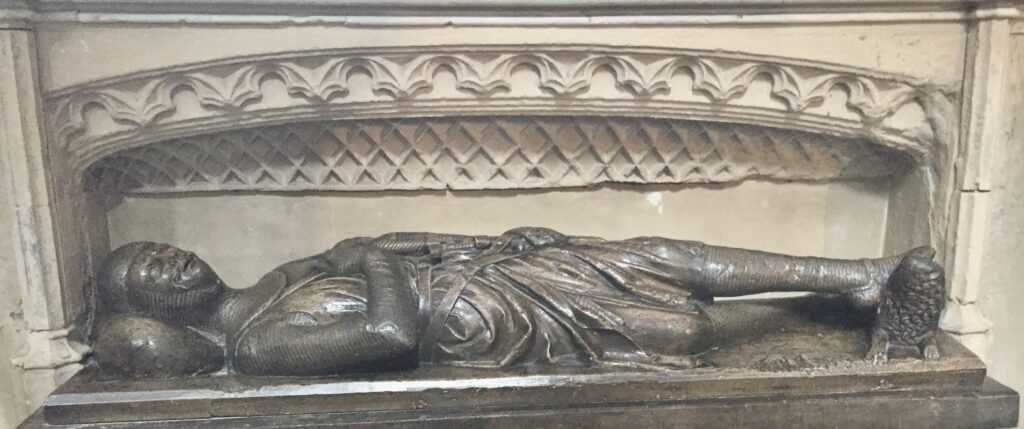
Thomas Cure was a very important person in Southwark and London. He was the MP locally, and in East Grinstead, as well as the Master Saddler to King Edward VI, Queen Mary I and Queen Elizabeth I. He founded almshouses for the poor and these stood for nearly 300 years in Park Street, until the new railways forced their move to West Norwood. Eventually they were relocated, in the form of modern sheltered flats, to Purley, Surrey in 2006. Cure died in 1588 and this is a ‘cadaver tomb’, reminding us all of our mortality …
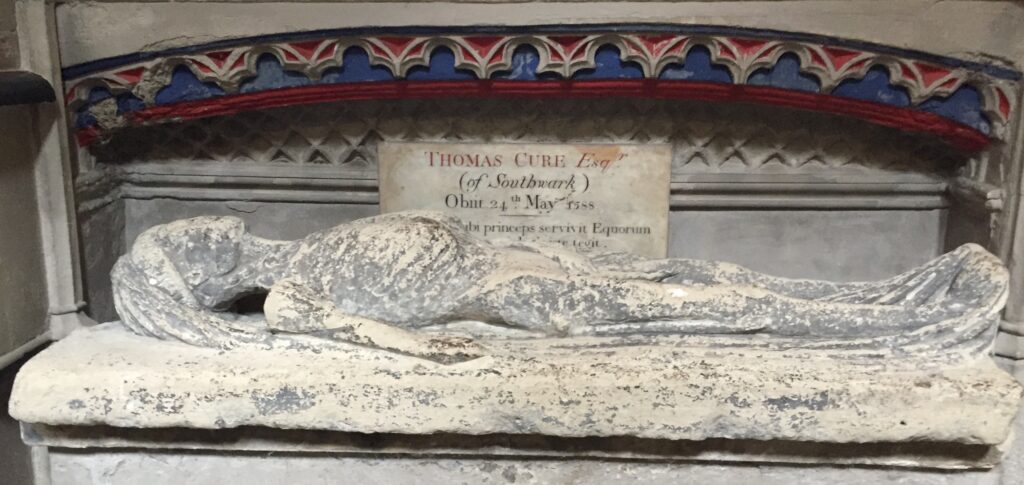
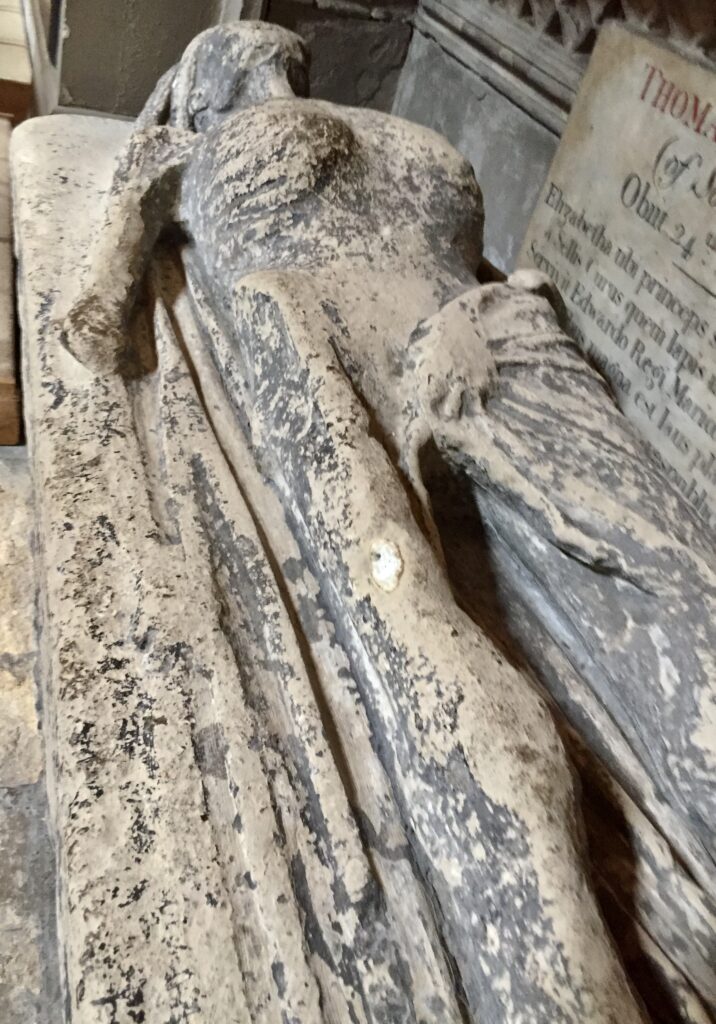
Is there anywhere in the world a more impressive monument to a quack ‘doctor’? Lionel Lockyer never qualified as a doctor (he was originally a tailor and a butcher) but became famous for his miracle pills that he claimed included sunbeams as an ingredient …
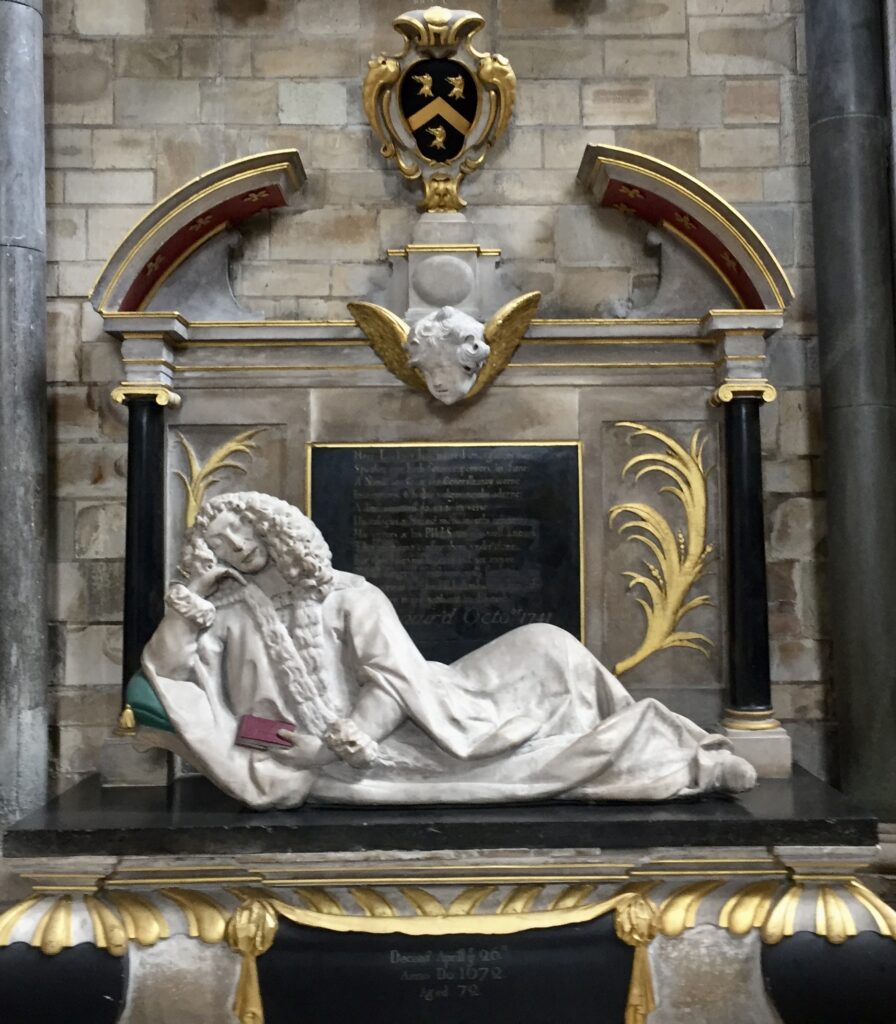
His tomb has an amusing inscription which includes the words …
His virtues & his PILLS are soe well known…
That envy can’t confine them vnder stone.
But they’ll surviue his dust and not expire
Till all things else at th’universall fire.
The man himself …
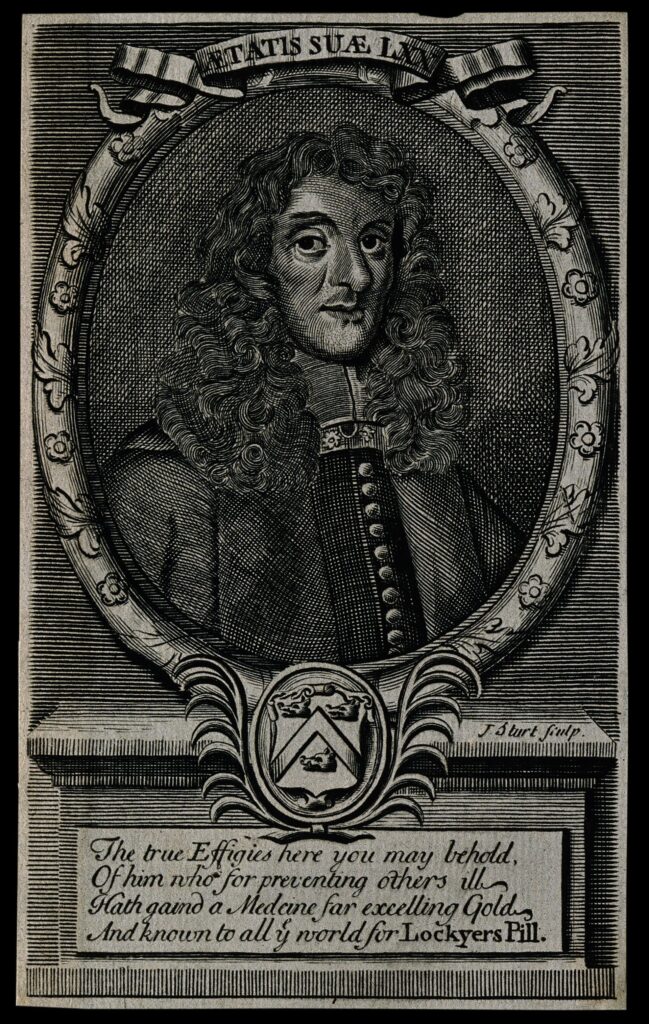
Following Lockyer’s death in 1672, his pills continued to be sold by his nephew, John Watts, in partnership with Thomas Fyge, an apothecary. The pills were sold wholesale in tins of 50 or 100 at a price of 4 shillings for 100. That equates to about two weeks’ wages for a skilled tradesman.
This is the tomb of John Gower. He was the Poet Laureate to Richard II and Henry IV and his head rests on his three best known books, Vox Clamantis in Latin, Speculum Meditantis in French, and Confessio Amantis in English. He died in 1408 …
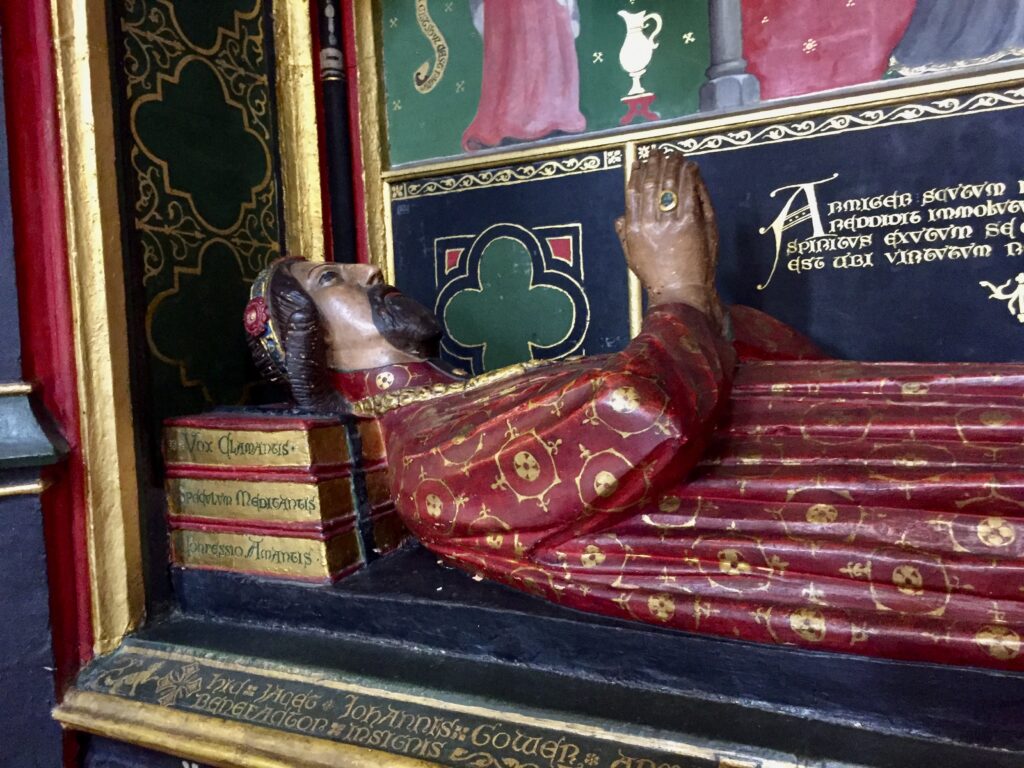
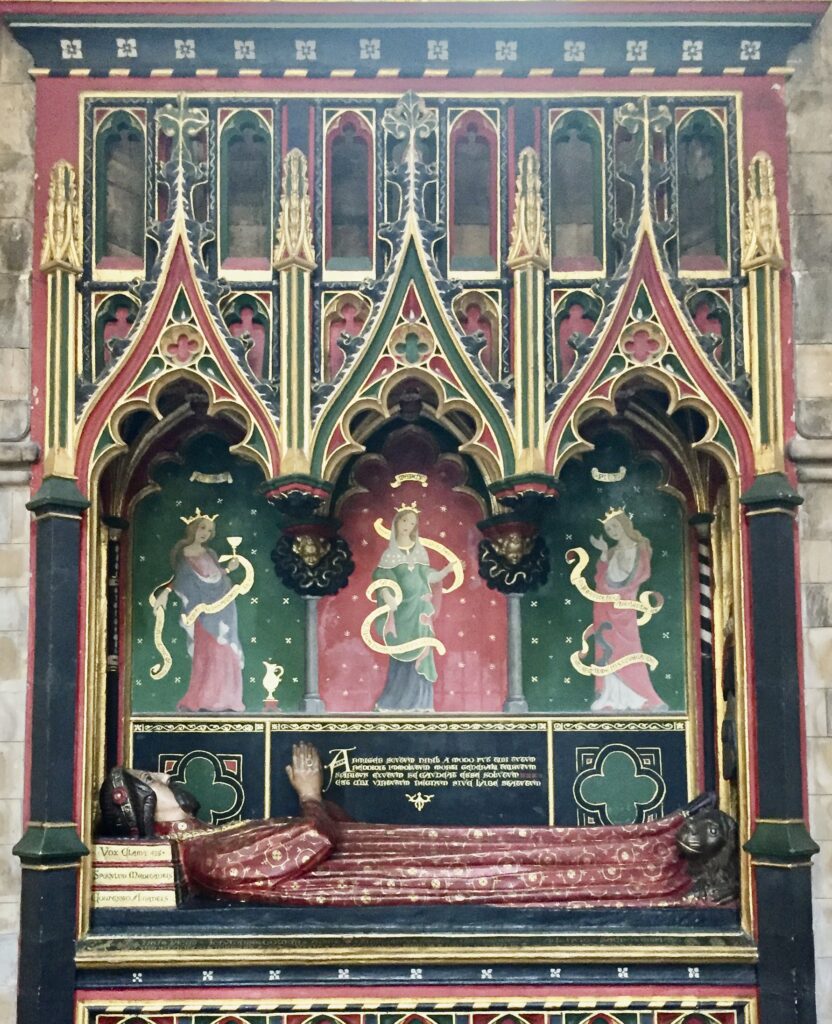
I finished my short visit looking at a collection of medieval roof bosses. In 1469 the roof of the priory church collapsed and the stone vaulting was replaced by a carved wooden ceiling. This is one from that ceiling and shows the Devil swallowing Judas Iscariot …
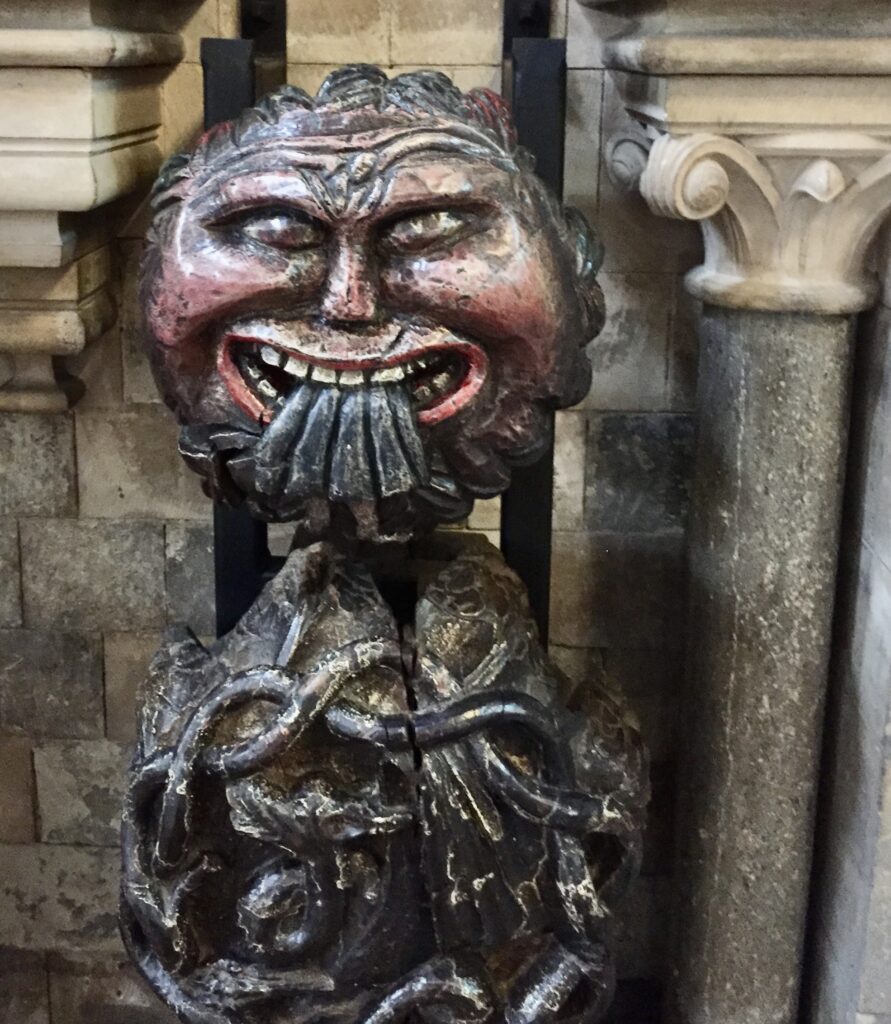
There was, of course, lots more to see at Southwark, so I shall return. I went on to have a wander around the area and will report back on that next week.
If you would like to follow me on Instagram here is the link …
